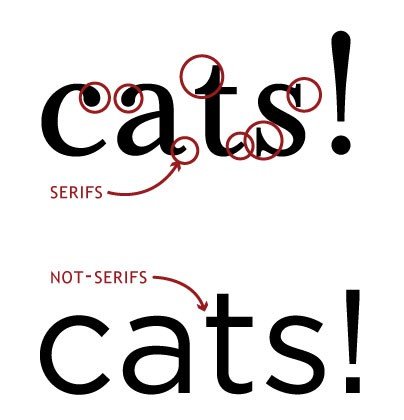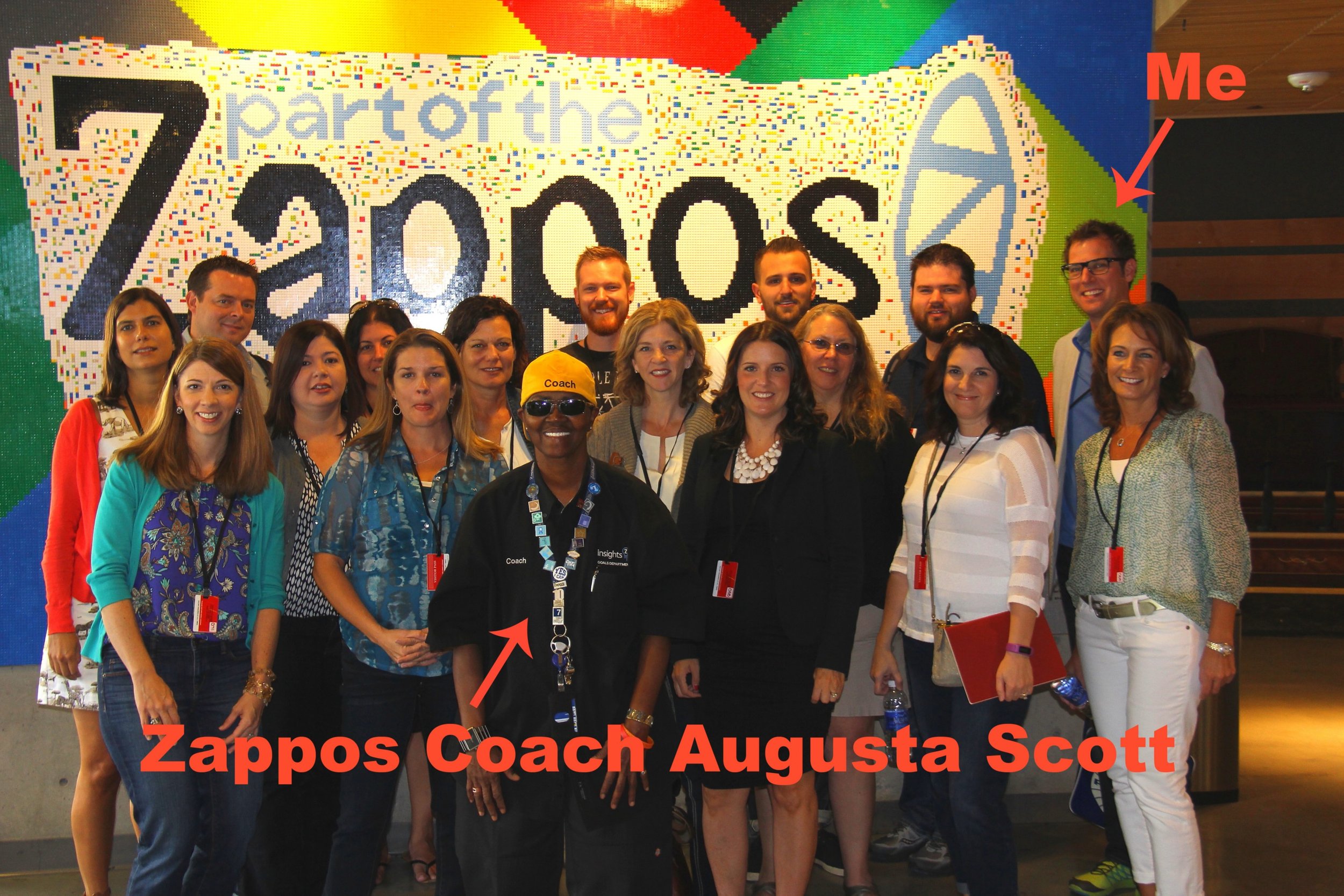
THE BLOG
Innovative workplace, with no money down!
By: Tim Cynova // Published: January 23, 2017
Being an “innovative workplace” isn’t just about having a great idea. Great ideas are a dime a dozen. The halls of history are littered with great, unrealized innovative ideas. Innovative workplaces instead are about the people and systems that allow and support ideas to be explored, nurtured, and often, nixed.
For many of us, when we hear “innovative workplaces” images of Google or IDEO flash through our minds. Not a bad connection, but it’s often assumed that to be an innovative company you need to provide free food and Razor scooters to race around colorful office. Yes, some innovative workplaces have those things, but many more don’t. Conversely, even more un-innovative companies have free pizza and beer but lack what truly makes innovative companies, well, innovative. Free-flowing beer and pizza do not an innovative company make. In fact, research shows that innovation and creativity often thrive more in environments with more constraints. Great news cultural sector! We’ve been bemoaning being resource starved for decades — this is the silver lining! Many of the elements that help create innovative workplaces don’t cost money.
You heard it right — Innovative workplaces, with no money down!
You can create an innovative workplace with little to no “extra” money. However, here’s the catch (or small print, if you will), buyer beware: it requires commitment and intent that will test even the most resolute. Innovative workplaces are often environments that are unsentimental. Not unsentimental in a mean way. They aren’t devoid of emotion or don’t feel a sense of loss, but they know if something isn’t working there are twenty other ideas in the pipeline waiting to be explored. Ideas that could use the oxygen, time, resources, and bandwidth to be explored themselves. Innovative workplaces are places that experience constant change. What was true yesterday isn’t necessarily true today.
You’re either moving forward or falling behind. There is no neutral when it comes to innovation.
This means innovative environments aren’t for everyone, particularly those who feel like they operate at peak in a relatively consistent workplace.
Below are ten ideas to help you and your organization on the road to becoming a more innovative company. These ideas don’t cost money and encourage an innovative environment where people can work smarter, not harder.
1. Be strategic in your hiring process. Align business goals & staffing needs.
What are you trying to achieve and who are the people who will give your organization its best shot at success? One of my longtime mentors once said, “If you don’t know where you’re going, you’re going to have a hard time knowing when you get there.” The same is true in business as it is in life. What is your organization working towards? More of the same? More of the same but bigger? What does success look like? Who the hell knows? Once you can articulate what success looks like, it’s so much easier to see how the pieces need to start falling into place. If our organization needs to go there, we’re going to need X, Y, Z skills to help us achieve that goal.
I’m a firm believer in it all starting with — in the immortal words of the great Jim Collins — getting the right people on the bus. I recently spelled out some of my philosophy on this topic in a primer about How to Hire. Don’t just settle for a warm body because you desperately need someone to do the work. You’re missing a huge opportunity to add knowledge, and depth, and diversity to your team. If you’ve done the work of knowing where your organization needs to go, and what type of skills you need to help you get there, then stay the course on finding the right people. Too hard? You’ll spend the time up front, or when that person you settle for doesn’t work out. Your choice, but my advice is find the right person up front. I’ve never passed on a candidate who wasn’t quite what we needed and not ended up with someone better in the end.
When you get that person in place, the work has just begun though. I’m also on record having outlined my philosophy on investing in our human capital. Burning through people like they’re disposable is not a long-term strategy for innovative workplaces. If you need more assistance figuring out how to align your business goals with your people strategy, check out Who: The A Method for Hiring. It’s a terrifically helpful tome, I promise.

2. Be transparent. Share information.
When employees have more information and context for how their work fits into the bigger picture, they’re more likely to make smarter decisions. Adopting this one has been a challenge for me in my career as it doesn’t come naturally. My default is to make sure everything is lined up and in order before sharing the information. I changed the way I approach that though after an organizational behavior mentor of mine explained, “It’s counter intuitive to do this, but research shows that giving people more information will bear out in better understanding, decision making, and engagement.” I decided to trust her on this one and take the leap.
Ever ask someone who you think made a really bad decision why they did it? Bet the answer wasn’t, “I was trying to make a really bad decision with the information I had available to me.” No, for the most part, people are trying to make the best decisions that they can given the information and context available to them. A friend recently remarked that the main difference between the company’s Receptionist and the CEO is that the CEO operates with more context. So, what to do about this?
Perception is in the eye of the beholder.
In the absence of information and context, people make decisions using their perceptions. These perceptions, created to fill in the blanks, are often misperceptions when viewed by someone operating with more context, but misperception is still someone’s perception regardless of how inaccurate it might be.
Being transparent with information doesn’t need to be done like the radical transparency practiced by Ray Dalio’s Bridgewater organization. Bridgewater famously records every meeting — even employee terminations — and makes the videos available on their internal network to any interested staff member. Think about it. Anything you say at work about anyone, or anything, is available to everyone.
What might an environment look like if it’s transparent but maybe not radically transparent. First, trust that people will do good things with the information. Yes, there might be someone who shares something confidential, but don’t create an information structure that treats everyone from the onset as rule breakers. Deal with those who can’t be trusted with the information if something happens. Otherwise, default to open.
What does open look like in practice? Share the unredacted board packet with staff, every staff member from the administrative assistant to the vice president. Share it a few days before the staff meeting so that people have a chance to read it and ask questions about things they don’t understand. Think your operations are too sensitive? Google shares their packet with their 65,000 staff members and only redacts things that would be illegal to share due to SEC regulations. So, essentially, their entire packet goes out to tens of thousands of staff exactly as it does to their board members. Remember, greater ability to see how decisions work in the whole allows people to make better decisions themselves. Additionally, people will be more invested and do better stuff if they feel like it’s theirs.
During your all staff meeting set aside a section called “Ask the ED (Executive Director),” or “Know the CEO,” and let staff submit anonymous questions in advance and field some in real time. I guarantee you that staff have questions for their Executive Director if given an opportunity. We’ve been doing it for years at Fractured Atlas and the questions vary meeting to meeting, but there are always questions. Sometimes people want to know why a certain project failed. Other times people want to know the Executive Director’s favorite kind of donut (granted, that meeting fell on National Donut Day). For the executive, this might take some work to answer any question asked in a non-confrontation or non-combative tone, particularly if it relates to things that aren’t going well or things considered to be sensitive subjects.
This Q&A is a chance for everyone to share their perceptions, or misperceptions, to get people “on the same page.” I once heard a choreographer explain to someone that they were always are asked, “Which comes first, the music or the movement?” The choreographer was saying they get tired of answering a question they’ve received probably 1,000 times in their career. It was at this point that the other person said, “But it’s the first time that that person asking the question is hearing your answer.” Sometimes it might not be the first time for the answer — Really? We’ve talked about this at every meeting — but if people are still asking the question, they still need the answer.
One way to increase transparency in the organization is to align goals using Objectives and Key Results (OKRs). Simply, OKRs allow the chief executive to set the priorities as 2–3 broad objectives and more specific 4–5 associated key results under each objective for a given period (often every quarter). Those who report to the executive then create their OKRs for the quarter, specifically spelling out if an objective is a “child of” the executives. The process then cascades down through the organization so that each staff member can publicly identify their priorities for the period and see how they contribute to the organization’s success. At the end of the quarter, OKRs are graded on a binary achieved (Yes) or not achieved (no partial credit), and then shared with everyone in the organization. (Success rates should land around 70%.) When everyone knows each other’s priorities, can see how well they’re doing at achieving them, it allows everyone to make connections with their own work and leads to better alignment and success.
3. Use SMART task forces for idea exploration
That’s a great idea! Who wants to put it on their already packed plate? The next time someone floats an idea that might be worth exploring but the knee jerk response is, “We don’t have time or money,” ask yourself if this might be just the thing for a SMART task force to tackle. (SMART as in Specific, Measurable, Action-oriented, Realistic, and Time-bound.) The knee jerk response is an old way of thinking. Not enough time! Not enough money! We’re trying to create an innovative workplace. The organization’s next big thing might come out of a task force.
When we’re kicking around new ideas at Fractured Atlas that we think might have legs, a finite lifespan, or it doesn’t live in any one person’s domain, we’ll often convene a cross-organizational task force to dig in and explore it. Some companies have “20% time” where staff can use a few hours a week to work on projects they’re interested in outside of their “assigned” portfolio. Our task forces are more like 5–10% time. They bring together a few people from around the organization who don’t typically have a chance to work together on a project. Bonus: Task forces often afford staff who are earlier in their careers opportunities to develop and exercise leadership skills by chairing the group.
For the most part, task forces are scheduled whenever the group of people can find time, and we typically don’t provide any money at the onset. If something looks like it might work, we give the group a couple of dollars or additional resources to take the idea to the next level. Then a few more dollars if it continues to be promising. If not, we wrap things up, document, and move on. If we keep “knee jerking” away the ideas that don’t fit in the finite time we have, when is it that we intend to explore new ideas, new ways of thinking, new opportunities? When the current ones die out? Task forces allow us to exercise those muscles so that we create a culture of exploration and innovation within our organizations.

4. Use lunchtime strategically.
On its face, this is relatively simple to do. Most us eat lunch every day. Most of us do so huddled over our keyboard dropping crumbs into the keys as we flip from website to website. Lunchtime is often a huge missed opportunity to learn new things, connect with real live humans, make connections that will add information and context for your work, or to simply give your brain a much-needed break.
A recent study found that those who worked through lunch were rated as more exhausted by coworkers at the end of the day. One of the things the researchers discovered was that even reading recreationally during breaks (e.g., catching up on the news, checking your Facebook or Twitter feeds), taxes your brain in the same way as “work” reading. You think you’re taking a breather, but instead you’re just plowing your mental energy deeper into the red. Use lunchtime to stare out the window and let your mind wander. Or take a stroll around the block. The Internet has made it so easy to stay at our desks and keep working, that it’s now a novelty to go out to pick up lunch. Take your lunch like it’s 1989!
After nearly 20 years in the workforce, I recently lost my dedicated desk when we renovated our office. It was at this point in my 40s that I discovered a fun, new thing to do around lunchtime: go to the kitchen and eat with coworkers. Don’t think for the first few weeks that I didn’t feel anxious as my computer called out, reminding me that I needed to get. things. done. In the same way that working remotely versus working in the office allows us to do different types of work (often quiet, focused work), sitting and eating with other people for a few minutes allows you to use your time in a different but still important way. Give your brain a break. Let your ideas percolate in the background.
If you’re still struggling with the idea of lunchtime not hunched over your laptop, might I introduce you to a concept called Management By Walking Around. It’s either the laziest or most brilliant management philosophy ever — we won’t debate that here — but at its core is that part of the manager’s job is to be walking around, talking with people, learning new things, connecting human to human. If you’re a manager who thinks their lunchtime is too valuable not to “work,” broaden your frame for what work includes. Somebody invented an entire management philosophy that now gives you a business reason to never eat lunch alone. You’re welcome.
Another way to use lunchtime strategically is to bring in outside experts. At Fractured Atlas we call it the Visiting Professional Series. Every few months we bring in a guest to join us for an hour pizza lunch. Bringing in outside experts, especially those from sectors outside of the arts, exposes us to ideas and perspectives that expand the horizons for our own work and the world in which we live. You can also go with staff Brown Bag lunches to share ideas, experiences, and learning among your team. Bonus on this one is that while you’re learning new things, those sharing have an opportunity to practice their presentation skills.
5. Hold at least a monthly full staff meeting.
I’m amazed at how many organizations I come across in the cultural sector who don’t hold any, or regularly scheduled, all staff meetings. (See above: Be transparent.) When do you all get together to discuss your work, priorities, challenges, questions? I hate to keep bringing up Google (well, not really, I think there’s a lot to admire and steal from Google on the People front), but they have 65,000 staff members and have regular all hands meetings. A few years back, I had the opportunity to attend Zappos’s quarterly all hands meeting, and they had 1,600 employees at the time. And you don’t have a regular staff meeting, why?
We recently changed the format of our monthly Fractured Atlas staff meeting from one primarily composed of “report outs,” to one that circulates a meeting packet in advance and a call for pre-submitted questions. Same reports as before, just in written form. This gives people more time to read, ponder, and think about questions they might have about what we’re doing. We also set up a system for people to submit questions (anonymously, if they want) for any section — Know the CEO, Programs & Activities, External Relations; Finance, Operations & People. This allows those who might not be comfortable questioning the CEO or senior leadership directly, or speaking up in front of all of their coworkers, or wanting more time to consider the right question an opportunity to ask their question.
An all hands meeting is the most expensive meeting you likely will have. Don’t just report out. Do what you can’t do at any other time? Build a culture of transparency and sharing, that allows staff to make important connections from their work to the organization’s mission and goals.
6. Be Intentional & Persistent
Innovation doesn’t just happen. It doesn’t sudden occur when you think of that “great idea.” Great ideas die on the vine unless they’re hatched in an environment where they can be nurtured and grow. You can’t just wait for that great idea and then say, okay, time to create an innovative environment. Creating an innovative workplace take intent. Often you don’t know where that next big idea will come from so you need to be ready for good ideas coming from anywhere and everyone in the organization.
Innovative workplaces encourage experimentation and build it into every aspect of organization. Small, iterative developments allow you to explore ideas (See also: SMART task forces). Try something small. See what happens. Don’t test a new, interesting idea on your entire annual appeal mailing. Pull out a small sampling to test. It doesn’t have to be all or nothing.
Be intentional and persistent. Actively talk about and encourage new and different ideas. Give them air and support. Figure out why things failed and then go at it again. The 3M organization now famously created 15% time (time where employees could work on things they found interesting outside of their current portfolio), when the company was deep in the red financially. They adopted an “Innovate or Die” ethos, and from their intent and persistence sprung an office essential: Post-its. Google’s take at 15% time (or 20% time in their case), yielded Gmail. 3M and Google didn’t set out to discover Post-its and Gmail, but being intentional about creating an innovative environment lead to two things that are now indispensable in the modern-day office.
Your organization’s Post-its or Gmail is waiting to be discovered. Don’t set out to discover it, you’ll likely miss it. Set out to create a workplace where they can be discovered.
7. Ask Forgiveness not Permission
Sometimes you need to grab the bull by the horns, unless, in fact, you are trying to grab a literal bull by its horns. In that case, quickly walk away. Few things get me more agitated than when I hear someone say in a helpless voice, “I wish my organization would do X.” Newsflash: An organization is a collection of its people, and if you are on staff, you are in fact the organization you’re bemoaning. If you think something is truly worthwhile and going to make a positive impact, you need to figure out how to do it and risk asking for forgiveness later if things doesn’t turn out well.
For the past year, I’ve been conducting Crucial Conversations trainings. One of the powerful parts of the curriculum explores stories we tell ourselves that often feed our inability to have productive conversations. In particular, there’s the “Helpless” story — There’s nothing I can do. To combat this story, we need to ask ourselves, “What can I do right now to move towards what I really want?”
We will face plenty of roadblocks in our careers, some actual, some imagined. When you encounter one, rather than bemoan your plot in life, ask yourself what you can do right now to move towards what you really want. “They” never take my ideas. I think this would be transformational for our organization but I can’t get “them” on-board. Guess I’ll just have to keep toiling away, silently fuming. No! What can you do right now to move towards what you really want? You always have at least one option, even if you don’t think it’s a great one: you can always quit. Less drastic ways though, you ask? Noodle away on an idea in private, or in your discretionary time, or with a group of friends or coworkers.
Is it a great idea but not right for your organization? If it has promise, you might have discovered your next career move. Or your new hobby. I once created an online television show with a friend because we couldn’t convince anyone to program the conference content we were interested in consuming. Nobody could stop us from doing it ourselves though, or originally live streaming it from my hotel room during the conference (which must have been weird when the cleaner came into my room each.
What can you do right now to move towards what you really want? Sometimes people can’t see why something would be great. A quote often attributed to Henry Ford, “If I had asked people what they wanted, they wanted they would have said faster horses,” captures this. Sometimes people need to see the idea fleshed out a bit. Sometimes people can see exactly why something isn’t a great idea. We just need to flesh it out a bit. (I once found this out the hard way by starting a Junior Committee against the advice of five different Directors of Development.) If you think something is a great idea, but can’t garner support for it, ask yourself what you can do to move towards what you really want.

8. Be appropriately autonomous.
People who know what’s going on are often on the “frontlines” of the organization yet many times feel impotent to do anything about what they see. While you don’t want to give someone the ability to burn the place down on day one, figuring out how to calibrate appropriate amounts of autonomy will allow ideas, projects, and processes to develop without the bottlenecks that result when everything needs to run through a few individuals.
Don’t get me wrong, there are those who like the cover that comes with somebody else making the decisions. It’s easier to complain when you aren’t the one required to make the tough calls. (See also: Helpless story.) There are many more though who could do great things with their newfound information and context, but just need decision making pushed to those who need to deliver the impact of the decisions.
Want to figure out how to do this in your own organization? I’m a fan of Fierce Conversation’s Decision Tree model used to teach delegating skills. The Decision Tree model can be useful when working to set clear expectations and boundaries for decision making as people grow in the organization. It’s four levels of decision making correspond to the potential consequences of a poor decision:
Leaf. A leaf level decision is going to have little or no effect on the overall tree. You are autonomous and empowered to make a leaf decision without consulting others or telling your manager.
Branch. A branch level decision carries more risk than a leaf decision. You are empowered to make a branch decision and take action but must report what you have done to your manager.
Trunk. At the trunk level, the risk to the tree’s health is much higher. You can make the decision but before you take any action, you must discuss it with your manager.
Root. At the root level, the wrong decision can be life threatening and even terminal. You must discuss the pros and cons with your manager and others before you make a root decision.
Go ahead, plant the tree. See what happens.
9. Question conventional wisdom, preconceived ideas, snap decisions & assumptions
The next time you’re in a meeting where decisions are being made using conventional wisdom — it’s how it’s done — ask yourself why. Questioning conventional wisdom is how Elon Musk’s SpaceX is able to build rockets cheaper, by some counts 300 times cheaper, than everyone else can. Why is that how you build a rocket? Why is that how you produce and market a season, tour internationally, or create an annual appeal?
Want another tactic? Try using an exponential approach — or moonshot thinking — to identify other ideas. When you’re tossing around ideas about how to grow your donor base from 250 to 500 people, instead try to figure out how you could grow it from 250 to 25,000 in the same amount of time. You can’t accomplish the latter’s exponential growth with the former’s incremental ideas. Unless you’ve been incredibly lazy, “working harder” isn’t a viable strategy for achieving exponential results. It takes approaching the challenge in a completely different way.
Lastly, be open to alternative uses or approaches. Banging your head repeatedly against the wall might make you miss the door to your left. There are countless examples of this in the tech industry. Companies that failed to recognize in time the actual use case for their product, and companies like Instagram that set out to be Four-square like app only to realize that people just wanted it to share photos. Don’t miss the door to your left by blindly following assumptions and conventional wisdom.
10. Don’t retreat at the first sign of difficulty
Creating an innovative workplace isn’t an easy road. It’s new, different, doesn’t come natural to most of us, and from an organizational management standpoint, is essentially trading your existing set of challenges for a different set of challenges. It is, however, a set of challenges that when unlocked, enables an organization to change the world. And change-the-world action is how we need to be operating right about now. Old way, we get incremental impact at best; new way, we have a shot at the moon.
When creating an innovative workplace, you’re exercising new and different muscles. It’s going to ache a bit as you get started until you’ve adjusted to the new routine. Those who have New Year’s resolutions to exercise more know exactly what I’m talking about right about now. We can always pull the rip cord and go back to sitting on the couch enjoying pizza and beer. But, just like we know exercising, eating well, and getting eight hours of sleep is the foundation for a healthier, longer life, so too are these essential building blocks for a workplace that explores new ideas.

Innovative workplaces are bespoke. Not one-size-fits-all.
On your journey to creating an innovative workplace, it’s not about looking like Google, IDEO, Motley Fool, Zingerman’s or Zappos, it’s about looking like your company just more innovative-y. Figuring out the recipe and right mix of ingredients for your organization will allow you to build an innovative environment that’s much more resilient than if you merely tried to copy Google.
I don’t want to leave you with the impression that Fractured Atlas has it all figured out. Creating an innovative workplace is messy and constantly evolving. Even Fractured Atlas couldn’t just take what we have now and use it as a template to create what we have now. It’s been evolving over the past 15+ years. Do X, wait 15 years, is not the best strategy for creating an innovative workplace for today. Creating an environment that shares information freely, engages people in the process, and is intentional and persistent will have you well on your way to being your innovative workplace… with no money down.
Tim Cynova is a leader, HR consultant, and educator dedicated to co-creating anti-racist and anti-oppressive workplaces through using human-centered organizational design. He is a certified Senior Professional in HR, trained mediator, principal at Work. Shouldn’t. Suck., on faculty at New York’s The New School and Canada’s Banff Centre for Arts and Creativity, and for the past twelve years served as COO and then Co-CEO of the largest association of artists, creatives, and makers in the U.S.
Stellar Staff: The Lost Interviews
By: Tim Cynova // Published: January 16, 2017
Attracting and retaining great people who move organizations forward
Several years ago, I set out to interview a collection of senior-level executives about what they felt it took to attract and retain really great people who could move organizations forward.
I had the incredible fortune to speak with leaders from a myriad of sectors, people like the co-founder and TeaEO of Honest Tea to a Brigadier General who lead West Point’s leadership academy. I interviewed the person who is now the Director of Social Responsibility for Amazon and the person who owns my go-to coffee and artisanal donut shop. I also had the opportunity to interview a dear friend, Jack Watters, who was Pfizer’s Vice President of External Affairs. In the intervening years, Jack passed away from cancer. It was particularly bittersweet watching him share his wisdom again in his video.
The result of my 26 video interviews — over 400 minutes in “the can” — was this 45-minute presentation. I know enough to be dangerous when it comes to video editing, so after what was a Herculean effort for me to create that presentation, I grabbed a glass of bourbon and promptly misplaced the hard drive with the original interviews. Until now.
Like Disney opening its vault to find a collection of nerdy — yet still awesome — interviews, I now present to you Stellar Staff: The Lost Interviews.
This project took me four years to complete, so I’ve decided not to drop the videos all at once. Below are five interviews to get you started. I’ll post a handful of new ones here each day until I’ve emptied the vault.
Even all these years later, I would be remiss if I did not once again thank these individuals for sharing their time and insights:
Tom Allen, President & CEO, Association of American Publishers; former U.S. Representative from Maine’s 1st District
Christine Bader, Director of Social Responsibility, Amazon; former Visiting Lecturer on Human Rights & Business at Columbia University; Advisor to the U.N. Secretary-General’s Special Representative for business and human rights
Dan Debicella, former Connecticut State Senator
Karen Faaborg, Higher education mediator; former Executive Vice President, University of Cincinnati; former Chief Human Resources Officer, University of Cincinnati
Seth Goldman, Co-Founder, President & TeaEO Emeritus, Honest Tea
Paul Green, Executive Vice President, Maury, Donnelly & Parr Inc.
Donna Grummich, Owner & Principal, Box Canyon Group
Adam Huttler, Chief Executive Officer, Fractured Atlas
Thomas Kolditz, Director, The Doerr Institute for New Leaders, Rice University; Retired brigadier general, led Department of Behavioral Sciences and Leadership, U.S. Military Academy, West Point
Peter Landgren, Interim Senior Vice President of Academic Affairs and Provost at the University of Cincinnati; Dean, University of Cincinnati College-Conservatory of Music
Jordy Leiser, Co-founder & CEO, STELLAservice
Sharon Gersten Luckman, former Executive Director, Alvin Ailey American Dance Theater
Carol McFate, Chief Investment Officer, Xerox
Steve Morris, former Chairman & CEO, Arbitron; Board of Directors, Welch’s
David O’Fallon, President, Minnesota Humanities Center
Scott Provancher, Founder & President of Lewis & Clark Co.; former President of the Arts & Science Council in Charlotte, NC.
Cookie Ruiz, Executive Director, Ballet Austin
Maggie Ruvoldt, Regional General Manager, 2U; former Executive Vice President, Operations, Semester Online, 2U.com
David Schloss, Owner, Gypsy Donut & Espresso Bar; Professional writer, photographer and editor
Ken Tabachnick, Executive Director, Merce Cunningham Trust; former Deputy Dean, NYU’s Tisch School of the Arts
Russell Willis Taylor, Interim Vice President, Arts & Leadership at Banff Centre for Arts and Creativity; former, President & CEO, National Arts Strategies
Jack Watters, Vice President, External Medical Affairs, Pfizer
Clint White, Co-Founder & President, Arts+Culture Network
Amy Wresniewski, Professor of Organizational Behavior, Yale School of Management
Laura Zabel, Executive Director, Springboard for the Arts
It was wonderful having the opportunity to meet with so many amazing and accomplished individuals. I’m so happy to now share their advice and expertise with you. So, pop a bag of microwave popcorn, sit back, and enjoy!
Tim Cynova is a leader, HR consultant, and educator dedicated to co-creating anti-racist and anti-oppressive workplaces through using human-centered organizational design. He is a certified Senior Professional in HR, trained mediator, principal at Work. Shouldn’t. Suck., on faculty at New York’s The New School and Canada’s Banff Centre for Arts and Creativity, and for the past twelve years served as COO and then Co-CEO of the largest association of artists, creatives, and makers in the U.S.
How to Hire: A Primer
By: Tim Cynova // Published: January 10, 2017
We’ve entered a New Year — the future is upon us! It’s that time when people take stock of their life goals and think, time to change things up. As an employer, you can ignore this reflection point and pretend people aren’t thinking about it, but chances are at least a handful of those who work for your organization are dusting off their resumes and using this mile marker to take the next step in their careers. Happens every year. As an employer, it’s a good time to think about what you need to do to find that next stellar staff member when a position opens up.
Early in my career, I used to think hiring staff consisted of:
Someone leaves (Ah, really?!),
Dig up the last job posting we published, or go online and borrow one for a similar position from a colleague organization (Thanks, Alvin Ailey American Dance Theater!)
Sift through resumes looking for people with impressive schools (Harvard), companies (Kennedy Center), or interesting activities (college disc jockey),
Ask candidates questions that I had myself been asked in job interviews (What’s your greatest strength?), or seen on TV (Why is it that we’ll eventually need to fire you?),
Let my gut be the guide (Could I spend the day stuck at the airport with this person?),
Hire them (Congratulations!); and,
Wonder why it wasn’t working out to the point of frustration where they quit or I fired them (Ugh).
When I was firing every other person I hired, it struck me that there had to be a better way. It couldn’t all be a crap shoot. There had to be a way to at least increase the odds of success. How could we be more certain that the people we were hiring were the ones we needed to make a positive impact and move our company forward.
It was at this point in my career that I started consuming countless books, articles, videos, and interviews by people who did this thing for a living. People whose companies spent years and millions of dollars studying how to structure a process that separates the signal from the noise, if you will. I quickly realized, I’ll never have a team of PhD statisticians studying every conceivable option tested on tens of thousands of people, but I could find out what these professionals discovered and then use that knowledge to build a better process for me and my own organization.
Let’s state it for the record: Getting a hire wrong sucks. It sucks for everyone involved — the person we hire, their coworkers, the “hiring committee,” the manager, the entire organization. It sucks less for the lost money (although make no mistake “failed hires” cost us money), but it’s more about the opportunity costs. The time and energy spent on the process, that we now need to do all over again, versus spent on something else that benefits our organization. Failed hires can crush a team’s moral when they train a new staff member and then bang their heads against the wall for weeks, months, or sometimes (God help you) years when things don’t start firing on all cylinders. And, it ultimately can crush the new employee, who was previously a fan of the company, when they’re told that it’s not working and they need to move on.
Hiring is less about the questions you ask in the interviews — although those are certainly an important component — and more about the preparation and structure you set to guide the process. If you think great hiring begins with, “Where do you see yourself in five years?” you’ve missed a few crucial steps along the way.
What I’m going to recommend takes work. It’s a philosophy and a new way of working. Don’t want to do it? Go ahead, be my guest. Keep the same old crap shoot going. Your colleagues in the field will be more than thankful to hire the stellar candidates you overlook.
Hiring is a marketing campaign for your company.

Hiring is an marketing campaign aimed at getting people interested and excited to work for your organization. Nowadays it’s called “employer branding.” The good news is that you’ve been exercising some of these muscles every time you spend time and energy figuring out the best messaging and medium to get people excited about attending your events and donating to your company. Savvy applicants (just like savvy donors) — often the ones you really want working for you — have been keeping an eye on your organization well before you hit “Publish” on that job posting. They’ve been Internet stalking you, asking around, and probably secret shopping an event or two of yours. How was I treated when no one had any idea who I was? Was the event and artwork interesting and worth my while? What voice do they use in communications — IRS or that friend who really gets me?
Everything you print, do, or say during the process to attract and hire people communicates something about your company. Can you read the entire job posting without nodding off? It doesn’t need to be encyclopedic, or written so only God is qualified. Use the job posting to get your ideal candidates interested and unveil more during the interview process. Smart people get it. Also, people don’t read. (Thank you if you’ve read this far into my post.) If you could only Tweet your job posting, what would the 140 characters contain? Remember, your job posting is an advertisement. Think a job posting that’s more Internet dating profile and less scholarly dissertation. You’re trying to get people excited and interested to do something, not answer every conceivable question. You’re trying to connect with candidates who believe in what you do and could see themselves contributing to, and thriving at, your organization.
Does your posting reflect your company’s personality?
What does the job posting say about what it’s like to work at your organization? A quick glance at the job boards say that it’s incredibly boring, stuffy, and uninteresting to work for the cultural sector. Where’s the humor, the quirky, the creativity, the caring? Maybe you do work for a boring, stuffy, and uninteresting arts organization, but my hunch is that those places are in the minority. (I’ve gone drinking with too many arts administrators over the years to believe that boring and stuffy is the norm.)
Lastly, unlike events where most fans can score a ticket, in hiring you often only get to make one fan really happy and potentially piss off the rest of the people who previously loved your company. What can you do during the hiring process to make people even bigger fans of your organization, even if they aren’t offered a position? This could be as simple as giving candidates a tour of your office, letting them chat one-on-one in a “non-interview” context with someone who’s in a similar position to the one they want, or just emailing them to say it was great getting to know them and that the search has concluded. Think about it more like the process you use cultivate donors and less how you might correspond with Verizon service repair after a week without the Internet.
Be honest.
This requires some introspection, and some asking. What’s it really like to work for your organization? What do people value most? Enjoy most? Dislike most? If you say “we party every day and laugh nonstop,” but your company culture is quiet and buttoned up, you’ll attract the wrong candidates from the start. We’re often in too big of a hurry to fill a vacant seat that we throw being intentional out the window in favor of crafting nothing more than a generic and uninteresting post about the position. Is it any wonder a common refrain is that we often end up with “uninteresting” candidates who aren’t “quite right” or “a fit”? These individuals might actually be the perfect fit for the job posting and the process we put candidates through.
Build a high-performing team
Cycling’s TTT or team time trial
When people leave your organization it’s often a terrific opportunity to hone and refine your team in ways better suited for the organization of tomorrow than yesterday. Don’t get me wrong, I’m sad to see coworkers leave the company. It’s a fact of life though, every one of us will leave at some point. While I might be sad, I’m also happy for their next adventure, and for ours. Organizations are built on the accomplishments of current and former staff. (It’s one of the reason why I love that we have photos in the Fractured Atlas office that include former coworkers. The company didn’t just come into being the moment I walked through the door.).
People, teams, and organizations grow and develop in new and different ways and along various timelines though. Someone who might have been a stellar fit yesterday for the organization, might not be what the organization needs to achieve its goals tomorrow. Same with a person’s goals and challenges. These change over time. This is one of the reasons why people leave companies. I’m on record for my view of the responsibilities organizations have to invest in their people, so please don’t interpret any of this next part as me advocating for burning through people and then swapping them out.
We think nothing of professional sports teams trading and bringing on players to craft a high performing team to increase their odds of winning. That’s what sports teams are supposed to do, win, right? What does “winning” look like to your organization, and what kind of team do you need to assemble to increase your chances of achieving that objective? Before posting for that open Development Associate role, this takes pulling back from the page to see who’s on the field of play. Maybe you have some people who have developed new skills that allows you to shift them around, obviating the need for a Development Associate, but allowing you to bring on that marketing person everyone has been hankering for. Hiring a carbon copy of the person who’s leaving — even if they were a rockstar — is also missing a huge opportunity. Sometimes the game changes. Sometimes the field on which it’s played changes.
High performing organizations and teams cultivate a diversity of voices and healthy conflict among them. Don’t take my word for it, there’s plenty of research out there to back up that statement. Once you have one Tim Cynova you don’t need another one. Tim Cynova does a decent job of being Tim Cynova, and another one just takes a seat that could be occupied by a different voice. There are 7 billion people on this planet. There are more people out there who could be superstars at your organization, you just need to use a little elbow grease to find them.
One person’s stellar is another’s mediocre.
When looking for those superstars, don’t abdicate your own judgment. Just because someone went to Harvard, worked for the Kennedy Center, or came with a recommendation from a trusted colleague, doesn’t mean you shouldn’t vet them just as you would anyone else. I don’t use someone’s else judgement as a proxy for my own. Nobody except those who currently work at Fractured Atlas know what it’s like to currently work at Fractured Atlas. Former staff members and those outside of the organization might have a good idea of what it takes, but the nuances of team composition, skill sets, and projects in the queue, are enough of a challenge to balance from inside the company let alone from an armchair quarterback’s vantage point. Stellar changes over time depending on the circumstances. And stellar staff aren’t necessarily interchangeable. Just as your company’s stellar isn’t necessarily Fractured Atlas’s stellar, so too Fractured Atlas’s stellar isn’t necessarily Google’s, or Zappos’s, or Zingermans’s stellar, and vice versa, and so on. Recommendations, however high praise, merely should call your attention to the candidate, not put them on the fast track for hiring.
Your gut’s not that great
Do you hire all day, every day? Yes? This post isn’t for you. No? While it sometimes feels that way, I even don’t, and I hire a lot. Leave the well-trained talent acquisition gut to the day-in, day-out professionals. For those of us mere hiring mortals, we need to check our gut and beware of our biases. The biases that make us think we’re better at hiring than we are, and the biases (conscious or unconscious) that cause us to eliminate stellar candidates for the wrong reasons.
Image from Business Insider
Hopefully you’re not in the “I don’t have biases camp.” Everybody has them. Knowing what they are allows you to be mindful of how they influence your decisions and help you safe guard against them when making decisions. I’ve found three things quite good in helping me identify my own biases. The first is this handy graphic of 20 Cognitive Biases That Screw Up Your Decisions. The second is Harvard’s Implicit Attitudes Test. (Beware, it can be a sobering and humbling activity.) The third is a video by Google Ventures of Unconscious Bias in the Workplace. I highly recommend all three.
Think about this. How many of us include “High school or college diploma required (or even preferred)” when posting a position? Why? We’re using that as a proxy, right? If a candidate could graduate from college they’ve cleared an important bar necessary for this Administrative Assistant position? (Look, I’ve been there, and recently removed mention of educational preference or requirements when posting jobs at Fractured Atlas.) Even “X years experience preferred/required” is fraught. Some people have a knack for doing a really bad job for a really long time. Others change the world before their 21st birthday.
Contribution trumps age, length of tenure, or whether they graduated from high school.
Why can this be a bad proxy? Think about it. Two 25-year-olds, one graduated from high school and college, the other didn’t. It’s not like the latter’s life was paused. They woke up every morning and did something, just like the person who graduated from school. What kind of experiences did they have during that time that will add depth, and diversity of experience and thought to your organization? They might have attended college but failed to graduate due to a family tragedy. They might not have had the means to attend college but instead worked for a law firm gaining invaluable knowledge and experience. Figure out how to create a talent acquisition environment that allow you to see how someone thinks, approaches challenges, works with a team, and ultimately delivers. This is what’s important. Not their name, their address, or whether they graduated from high school or college.
A word about the value of past experience. I once read of a study that followed highly compensated investment bankers. It was tracking those rockstars in the field that commanded massive compensation packages when moving from one firm to the next. Essentially, it found that in most cases, those rockstars never achieved anywhere close to their former glory at their new firms, even though they were paid even more money. That was, unless they brought their team with them.
When you think your gut is great, you’re often placing more weight on the times you “got it right” than on all of the times you got it wrong. So, if you’re not supposed to trust your gut, then what? In addition to being aware of your biases, one way to do this is to team hire with people who have different experiences and ways of thinking. You can each challenge the others’ assumptions and conclusions, and ultimately produce a more rounded picture of each candidate.
Post-it artwork. Image by Peter Hellberg
Post-it to stay on track.
I learned from my dancer friends in college that when they did spins on stage they used a light in the back of the hall to spot themselves. I was a trombonist, so the concept of spotting was foreign to me. My chair and music stand always stayed in the same place throughout the performance. Why spot? Because if you don’t, you can end up wildly off from where you started.
When reviewing application packets, I took this concept of spotting and turned it into 3–4 things written on a Post-it note. What are the 3–4 things that I’m looking for in this review round? Customer service experience? A cover letter that demonstrates personality and an understanding of the organization? Filmmaking background? Before I read each application, I review that Post-it note. If I don’t, I find myself shifting over the course of reviewing 300+ application packets. Where I was evaluating the first fifty or so by certain criteria, something started to shift and I’m now weighting packets 50–100 differently. Starting back with that Post-it each time helps me stay consistent through each evaluation round. I can then change the Post-it and do subsequent rounds if I need to further winnow the list of candidates before starting the interview process.
Image by Unsplash
Structured interviews
To insure you’re evaluating each candidate with similar information, and steering clear of conscious or unconscious biases, use a structured interview. In a structured interview, every candidate is asked the same questions in each round. If you’re not doing this, how do you know you’re comparing “apples to apples?” I’ve had perfectly lovely, engaging conversations with people I think would have been horrible fits for a position. I can shoot the shit with someone about bourbon, burritos, or biking for days, but if they aren’t an effective fundraiser, all that friendly chatter has an expensive price tag when they’re hired for that Development position. I’m not saying you can’t veer off the script for a follow-up question or two, or need to conduct interviews with the humanity of a robot (remember, the candidates are evaluating whether or not they can see themselves working with you the bulk of their waking hours), but sticking to a script will insure you’re able to evaluate like data for each candidate.
Creating a structured interview begins with detailing the duties of the position and traits of the successful candidate. The next step is figuring out what questions and/or exercises will allow you to capture relevant data. Then structure the process. At Fractured Atlas, everything we ask of a candidate — from the format to submit materials to the reference check process — has a purpose. It has a purpose specific to our organization and the position, not necessarily a universal search process. (See earlier disclaimer about how this is work, but work that yields better results.)
When creating a structured interview, say, these are the six questions we’re going to ask everyone on the phone interview. These are the 15 questions we’re going to ask them in the first in-person interview. Then, ask yourself: Why are we asking this question? What do we hope it will tell us about the candidate’s character and ability to do the job? Leverage situational questions: Tell me about a time… (e.g., your project management skills saved the day; you were given a project where there was a great deal of ambiguity; you had to raise $1,000,000 from scratch). Don’t just let someone get off the hook with, “I took a fundraising course in college.” Have them explain how they used those fundraising skills in real life. (For all I know, they scored the worst grade out of the entire class. Or, scored the highest but are unable to translate that theoretical knowledge to the practical.)
Interviewing is a two-way street.
Leave plenty of time for candidates to ask you questions. Their questions are a great opportunity for you to learn about them and how they process information. These are the people who will potentially work for your organization, be brainstorming in meetings, be participating in healthy conflict, be handed projects to accomplish. What kinds of questions do they have? Broad, lay-of-the-land type? Specific nuts-and-bolts type? Insightful and thought provoking? Run of the mill? Are they methodical in their questioning or all over the map? No questions at all? Usually a red flag. Really, you don’t have any questions for me? You know absolutely everything about this position, organization, people, current projects, future projects, epic fails, overwhelming successes, our hopes, our dreams, and desire for an office Velcro wall? Will this be someone who settles into the position and then churns away on a project, in the wrong direction, way past the point at which they should have asked for clarification or help? Maybe. Beware of the candidate with no questions.
Don’t get too attached to candidates. Smart, informed candidates are usually more willing to walk away from you than you are to nix them from the process. While it sometimes results in “ideal” candidates withdrawing from a search (been there), in the long run it’s for the best. Also, what are you going to do? If someone perceived something about the people, the organization, or the work that caused them to not want to proceed, or believes a competing offer is more attractive, it’s usually not worth running after them. Usually. Just don’t get too attached.
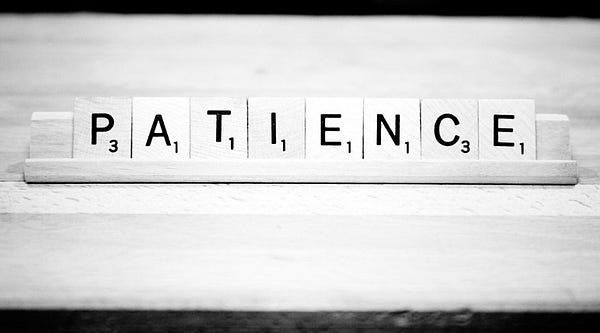
Be patient. Don’t just settle.
This is a tough one, even for me sometimes. It’s the “they’re good enough, I just need a body doing this work yesterday.” Wait. The right candidate adds exponentially to your organization, while settling seldom moves you forward. I’ve never cut loose candidates, even really promising candidates, and not found a better one in the next search. It’s painful, especially when I know that a candidate likely could have been great, but we already have that person, that kind of great, in our organization. When you’re building a star team to accomplish great work you want people who add things you don’t currently have on your team. You don’t want people who think and act like you, or a carbon copy of someone you already have on staff. Be patient and search with intent.
The work we do in the cultural sector is challenging, intense, and deeply meaningful and transformational. The work to build stellar teams is just that, work. Make no mistake though, you’ll do this work whether you want to or not. The alternative shows itself in the form of a revolving door, mismatches, and failed hires. Take the time to build a team of stellar people to increase the odds of success. We all benefit from that work.
Tim Cynova is a leader, HR consultant, and educator dedicated to co-creating anti-racist and anti-oppressive workplaces through using human-centered organizational design. He is a certified Senior Professional in HR, trained mediator, principal at Work. Shouldn’t. Suck., on faculty at New York’s The New School and Canada’s Banff Centre for Arts and Creativity, and for the past twelve years served as COO and then Co-CEO of the largest association of artists, creatives, and makers in the U.S.
Top 16 Books I Didn’t Read in 2016: But very much look forward to cracking open in 2017
By: Tim Cynova // Published: January 4, 2017
It’s that time of year again. That time when I feel surrounded by “Best Books” lists and realize that I purchased more than a handful of them during the past year that I’ve yet to crack open. It’s not because I’m no longer interested in reading them, it’s more because a few other things jumped the queue. (Thanks a lot, Netflix, for dropping The Crown and making me unexpectedly binge watch it.)
Lest I give the impression that I just buy books to make my boxes heavier when I move, please see my Top 20 Reads of 2015. Admittedly, 2015 was a big reading year. While 2016 was also a page turner of sorts, it was spent with my nose buried in SPHR test prep books that don’t make for interesting reading list material (unless you are, in fact, studying to pass the Senior Professional in Human Resources certification exam. To those individuals, Godspeed).
So here you go. The list of the books I’m now excited to start reading in 2017. Go ahead: buy a few, read a few, and let me know what you think.

Why Work Sucks: And How To Fix It
Results-Only Work Environment (or ROWE) first landed on my radar when Aaron Dworkin mentioned that his Sphinx organization used the framework. I’m a fan of creating work environments where people are judged on their work output rather than the number of hours they spend working. It’s the basis for being able to create productive and flexible work environments. If we all know what we’re supposed to get done, we can use that to judge success rather than the clock. I’m less than convinced though about some other parts of ROWE, like “all meetings are optional,” but will withhold judgement until after I’ve read the book.

Thinking In Systems: A Primer
It might sometimes feel like we’re operating in a vacuum, or on an island, but the world is an increasingly complex and connected place. Systems thinking can enable us to see how our decisions and actions — and the decisions and actions of others — influence each other. We’re not just operating on Our Island Inc. (unless you actually do own your own island). Being able to recognize the larger systems at play can help us make smarter, better informed decisions and recognize the broader impact of those decisions.
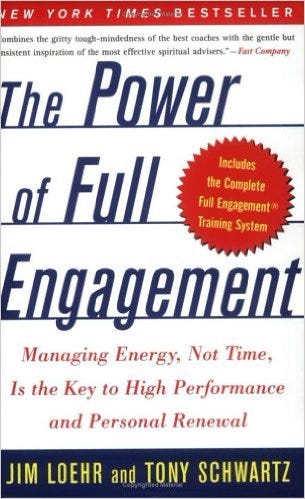
The Power of Full Engagement
There’s never going to be enough time in the day to accomplish everything that we want to accomplish. As our To Do list grows longer, we leave work more exhausted only to come home and confront another list of things we need to do and things we want to do. I talk frequently about the constant battle of The Urgent versus The Important, but feel like resolving that conflict only gets us part of the way. The Power of Full Engagement’s promise is that by managing one’s energy, rather than one’s time, we’re able to unlock the key to high performance and personal renewal. I’m game to find out.
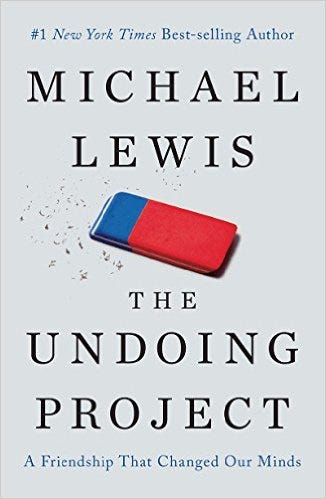
The Undoing Project: A Friendship That Changed Minds
Michael Lewis’s books, including Moneyball, Liar’s Poker, and The Big Short, have accompanied me on more than a few flights. I was excited to hear that his recently published book follows the friendship of two psychologists — Daniel Kahneman and Amos Tversky — who spent their careers undoing our assumptions about the decision-making process. (You might be familiar with Daniel Kahneman’s Thinking, Fast and Slow that was published a few years back.) I’m fascinated by how humans make decisions, as you’ll see with more items further down the list. All I’m waiting for now is that next flight.

Limbo: Blue-Collar Roots, White-Collar Dreams
A business school professor friend of mine recommended this read during a recent lunch. We were chatting about how, in work and life, you know which field you’re playing on, or even knowing that you’re standing on a field and there’s a game being played around you. That conversation came while discussing a “guard rails” approach to policies in the workplace (i.e., guard rails provide broad guidelines rather than prescriptive rules for every possible situation. Think “unlimited days off” policy versus “10 days a year.”) Broad guidelines work well for those who know how to play the game, but can negatively impact those who didn’t grow up in that environment. Limbo explores the “the internal conflict within individuals raised in blue-collar homes, now living white-collar lives. These people often find that the values of the working class are not sufficient guidance to navigate the white-collar world, where unspoken rules reflect primarily upper-class values.”
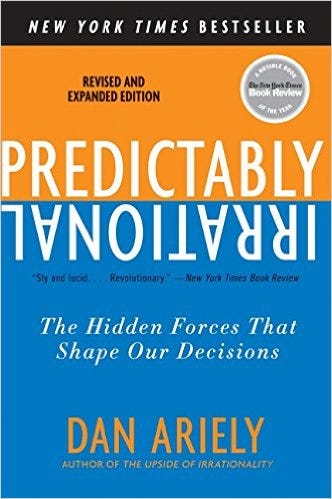
Predictably Irrational: The Hidden Forces That Shape Our Decisions
You might be sensing a theme on this list. Here we have the hidden forces that shape our decisions. Previously Michael Lewis was giving us a peek into two psychologists who spent their careers studying the assumptions of our decision-making process. In my work, I’m trying to figure out first how we make decisions in order for us to be able to make better ones. What unconscious biases are influencing us as we make what we believe to be totally rational, informed decisions? Predictably Irrational, let’s schedule that date together.
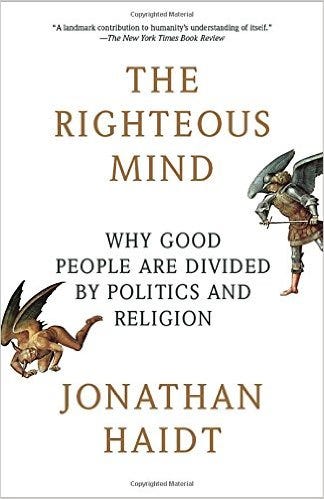
The Righteous Mind: Why Good People Are Divided By Politics and Religion
Um, after this recent election season, need I say more? I grew up in southern Indiana the son of a Lutheran pastor, and for nearly 20 years now I’ve lived and worked in New York City. On their face, Evansville, IN and New York, NY are radically different places. Take a closer look and you start to see commonalities that unite everyone on this planet. Like many people these days, I’m wondering how we’re going to bridge a gap that seems unbridgeable. As citizens of this Earth, what’s the way forward?
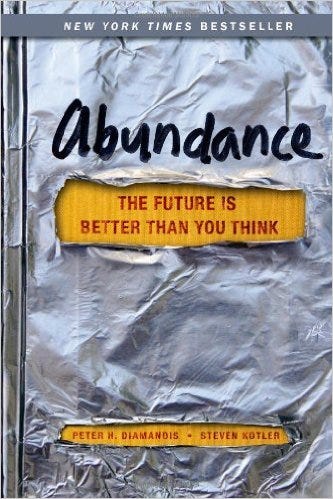
Abundance: The Future Is Better Than You Think
Um, after this recent election season, need I say more? Human creativity, ingenuity, grit, and the promise of a better future for everyone is driving extreme innovation. Using artificial intelligence, robotics, digital manufacturing synthetic biology, and other exponentially growing technologies, Diamandis created a “manifesto for the future that is grounded in practical solutions addressing the world’s most pressing concerns: overpopulation, food, water, energy, education, health care and freedom.” OK, I’m hooked.
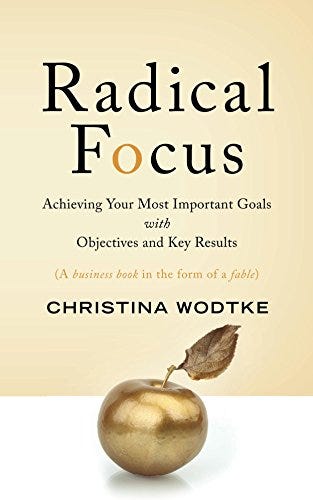
Radical Focus: Achieving Your Most Important Goals with Objectives and Key Results
This past year, we started using Objectives and Key Results (OKRs) at Fractured Atlas. In short, OKRs provide a transparent and structured process to align goals within an organization so everyone knows how their daily work is contributing to the company’s overall success. In preparation for our pilot, beta roll-out, and subsequent tweaking of the process, my colleagues and I read quite a bit about OKRs. Quite a bit except, what I understand to be, this excellent book. Now a year into OKRs at Fractured Atlas, I have questions about how we can further tweak our process to address some of the challenges we’ve encountered. Back to the books!
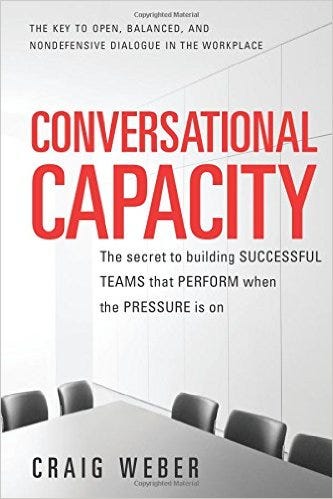
Conversational Capacity: The Secret To Building Successful Teams That Perform When the Pressure Is On
How many times have you been mid-conversation when you realized that you and the other person were definitely not having the same conversation. Maybe you were in the middle of providing input on a proposal when suddenly, it dawned on you, the other person was informing you of what was going to occur versus discussing the ideas in a give-and-take. When everyone knows the type of conversation they’re having, it can help teams engage in healthy, rather than hurtful, conflict en route to open, honest dialogue. Following my recent work as a Crucial Conversations trainer, I’m intrigued by any helpful frameworks we can add to our conversational toolbox.
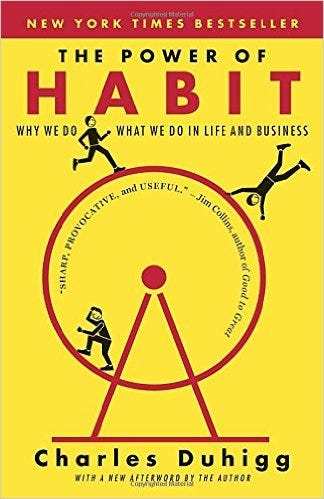
The Power of Habit: Why We Do What We Do In Life and Business
Inertia is a powerful force, as it seems too is not reading a book you’ve meant to read for a few years now. I have friends and coworkers who rave about this book. Each time someone mentions it, I go to save it on my Amazon wish list, only to rediscover that it’s already there, staring me in the face, unread, still. A book about habits seems like a fitting one to start a New Year. While I don’t make New Year’s resolutions — only to feel bad when I break them a few weeks later — I do have habits. Time to figure out why.
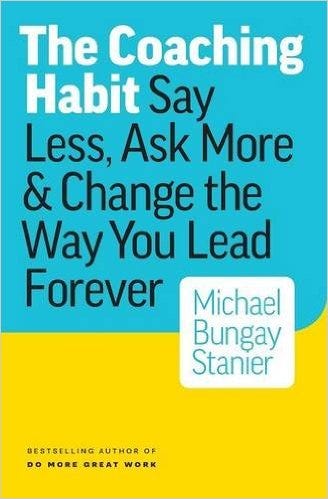
The Coaching Habit: Say Less, Ask More & Change the Way You Lead Forever
We’re piloting an employee coaching initiative at Fractured Atlas right now. Essentially, there will be a few people who have primary job responsibilities but are then also trained and deputized to be coaches working with staff on any goals they’d like to achieve. Read a 1,000 page book? Create a plan to buy a house? Learn new skills in order to change careers? All fair game. While I’ve read Co-Active Coaching: Changing Business, Transforming Lives — the book on coaching — and have attended Zappos’s coaching camp, The Coaching Habit comes highly recommended from our first deputized Fractured Atlas coach. Whether you’re looking to develop an internal coaching program or become a better manager, this one looks like a worthwhile read.
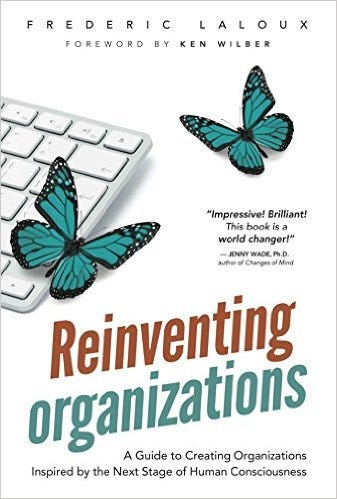
Reinventing Organizations
For those of you who know me, you’ll probably be shocked to learn that I’ve yet to read this book. For whatever reason, it’s been in the queue for a while and when I go to choose the next read, this one hasn’t won out… yet. This is the year though. 2017 is the year I’m finally going to crack open Laloux’s groundbreaking book. In addition to countless recommendations to read this by friends and strangers alike, two lines from the book’s description have me hooked: “We long for soulful workplaces, for authenticity, community, passion, and purpose,” and “…nonprofits have a noble purpose, but working for these entities often feels soulless and lifeless…” Shared purpose can change the world. Let’s steal the ideas from this book and get going!
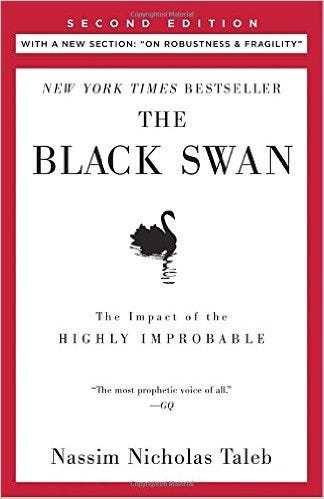
The Black Swan: The Impact of the Highly Improbable
These next two books were recommended by Tom Gardner, co-founder of The Motley Fool, when he visited Fractured Atlas for one of our Visiting Professional Series lunches. I forget exactly why Tom recommended these books, but each time I go to remove them from my wish list I reread a description like, “A black swan is an event, positive or negative, that is deemed improbable yet causes massive consequences. Black Swan events explain almost everything about our world, and yet we — especially the experts — are blind to them,” and I think, damn, that sounds like an interesting book.
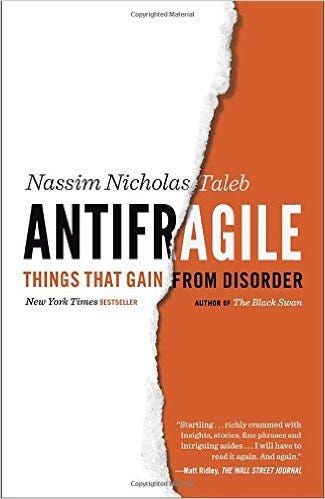
Antifragile: Things That Gain from Disorder
“Why is the city-state better than the nation-state, why is debt bad for you, and why is what we call “efficient” not efficient at all? Why do government responses and social policies protect the strong and hurt the weak? Why should you write your resignation letter before even starting on the job? How did the sinking of the Titanic save lives?” I can fathom a guess, but Nassim has me hooked, and I’ll give his book a read to find out.

The Fine Art of Mixing Drinks
This is the reprint of David Embury’s 1948 classic guide to mixing cocktails. There are few things more enjoyable in life than mixing yourself a fine cocktail and sitting down with a good book, perhaps even one from the list above. Happy Reading and Happy New Year!
Tim Cynova is a leader, HR consultant, and educator dedicated to co-creating anti-racist and anti-oppressive workplaces through using human-centered organizational design. He is a certified Senior Professional in HR, trained mediator, principal at Work. Shouldn’t. Suck., on faculty at New York’s The New School and Canada’s Banff Centre for Arts and Creativity, and for the past twelve years served as COO and then Co-CEO of the largest association of artists, creatives, and makers in the U.S.
Seeya, ’16, you were one helluva year
By: Tim Cynova // Published: December 26, 2016
There are a lot of reasons why people are looking forward to 2016 wrapping up. Bruising Presidential campaign. Loss of cultural icons, including space heroes and artistic geniuses. Multiple E. coli scares at Chipotle. This isn’t a post about any of those things, especially E. coli.
This is a post about a group of individuals who came together as a team and turned 2016 into a banner year. One of those years you look back on and think, damn, that was a great year.
Here’s the synopsis of accomplishments:
Unlimited days off.
Expanded family medical leave.
Objectives and key results.
Total office renovation.
Professional employer organization.
Switched 401k providers.
Senior Professional in HR body of knowledge.
Build a humane, respectful, and trusting hourly pay structure.
Multiple hardware and software changes liberating staff from a fixed work site.
Tools for talking when talking turns tough.
Launched staff anti-racism and anti-oppression training.
Published How We Work: A Guide to Working at Fractured Atlas website.
24 Staffing changes.
I count myself incredibly fortunate to do something that I love, with people I respect and who make me raise my game every day. About a year back, two of my coworkers and I came together to form what inside Fractured Atlas is referred to as our People team. In my role as COO, I have the distinct pleasure of leading this team as we work to provide our smart, talented, hardworking, and inspiring coworkers with what they need to do their best work and thrive. And in doing so, we as an organization can continue to innovate and provide our 60,000+ creative members with the services and support they need to be even awesomer.
The days are long. Lists grow seemingly exponentially. People’s heads dip below the waterline. And time rolls on. This post is taking a quick breather to reflect on the challenges and triumphs we’ve experienced during the past 12–18 months. While the intrepid Fractured Atlas People team — Nicola Carpenter, Jillian Wright, and I— helped spearhead many of these efforts, we neither did it alone or in isolation. Thirty-four Fractured Atlas staff were riding with us the whole time.
[Editor’s Note: This is still me, Tim, the person writing this post. I just wanted to separately emphasize one important point. For the record, not every staff member at Fractured Atlas is thrilled with the things on this list. Some people dislike our transition to unlimited days off. Some people love the new office, others hate it and the process we used. Some people like the recently expanded family medical leave, others think it’s a bad policy. Cultivating an engaged workforce with shared purpose is anything but a neat, tidy, and pain-free process. A few years ago, we adopted a guiding phrase at Fractured Atlas: directionally correct. Essentially, something might not be perfect, but in the spirit of not letting The Perfect be the enemy of The Good, we think that the decision is headed in the right direction. We are far from a perfect company. We have healthy dialogue, unhealthy dialogue, and sometimes the lack of any kind of dialogue. Creating an environment that supports staff and allows people to thrive is part art, part science. This is us on our journey.]
Often times during the job interview process, people ask us what it’s like to work at Fractured Atlas. One common refrain is that we operate in a blazingly fast environment, with constant change, and with a great deal of ambiguity. Not everyone excels in this type of environment. There are incredibly talented people, who are amazing at what they do, who don’t comfortably function in an environment that’s constantly changing. It’s why we’ve structured our interview process to find people who can thrive in that type of workplace.
Below is a little peek at some of the constant change we’ve experienced over the past year. Hopefully there’s something in this list that gives you an idea you can borrow, steal, or iterate on to help build an environment in your own organization that makes it better and more effective tomorrow than it is today. We’re on that same journey and happy to talk more with you about our process. So, in no particular order…
Unlimited days off
We’ve all been there. Rationing our vacation days or bending over backwards to avoid using them so we can “bank them” to cash out when we change jobs. In the meantime, our mental and physical health takes a toll for that future monetary reward, or that big vacation we never end up taking, well, because we have too much to do. Or, we finally take that big vacation and then try to hold on until our days off allotment resets so we can take another much-needed day. What a weird way for us to work, yet it’s the norm.
Why don’t we make clear what employees need to accomplish, work with them to accomplish it, and just let them take whatever days they need to stay healthy, happy, and engaged? Why do we run a tracker when nobody likes tracking? We often build systems for the worst (often fictional) offenders and then force everyone to use it as though they will abuse the system by default unless it’s spelled out in excruciating, rigid detail.
When we were creating our unlimited days off policy, we found two pieces of related research that we continue to share with staff: (1) With unlimited day off policies people actually take fewer days. This isn’t the reason we went the unlimited route, and we repeatedly ask managers to be proactive about making sure staff are taking time off. A burned out staff member is no use to anyone. Related, no one is indispensable. Just as it’s healthy for the employee to take time off, it’s healthy for the organization. It allows the company to identify single points of failure and adjust operations accordingly. (2) In order to get the real benefits of taking time off you need to chunk time into at least two-week periods. And, you need to unplug. Two weeks vacation won’t recharge you if you’re constantly checking email and Flowdock. Give someone your cell number and ask that they text if it’s an absolute emergency. Otherwise, remove your work email account from your phone and trust your coworkers to handle things that come up.
OKRs
Flexibility in where and how one works isn’t successful unless people know that what they’re doing is the right work to be doing. Thus, enter OKRs (or Objectives and Key Results).
For people to know what’s important to the company, identify their priorities, and how it all connects, we needed a system to pull it all together. Judging the quality of your work by how exhausted you are when you leave the office is the wrong ruler to use. Toiling endlessly hoping that what you’re working on is making a difference is risky business. Checking in with your supervisor once a year to make sure that what you’ve been doing is what you should be doing, and done in the way that is most helpful, is likely to be fraught with surprises for both of you.
We rolled out OKRs throughout the organization this past year. Not all at once, but every quarter we added another group to the mix, eventually ending up with all staff members completing quarterly OKR. With OKRs we’re able to tie them directly to taking the time you need to unwind. It’s not about punching a clock, it’s about the work output. It’s also about aligning every staff member’s OKRs from the top down and back up again so we all can see what we’re working on, how it relates to the organization’s success, and then (initially a bit scary since it means everyone can see everyone else’s) how well we did in meeting our goals. If you’re interested, here’s a helpful book about OKRs.
(We benefit immensely from our coworker Ian David Moss “riding herd” on this initiative. Thanks, Ian!)
Expanded Family Medical Leave
Life happens when you’re making plans, or when you least expect it. While we maintain an unlimited day off policy for vacation and sick days, staff requested that we spell out a specific policy for family medical leave. We talked with a lot of People people to create this and settled on a “cradle to grave” approach that covers parental leave (any caregiver), personal health crisis; and caring for parents, spouses, siblings, or children who might have an extended illness. We landed on two months paid and an additional month unpaid leave. While it’s not the 5+ months that Google or Etsy provide new parents, we feel good about it given our size and means, and imagine it places Fractured Atlas in the top 99th percentile of employers providing this length of non-mandated paid leave.

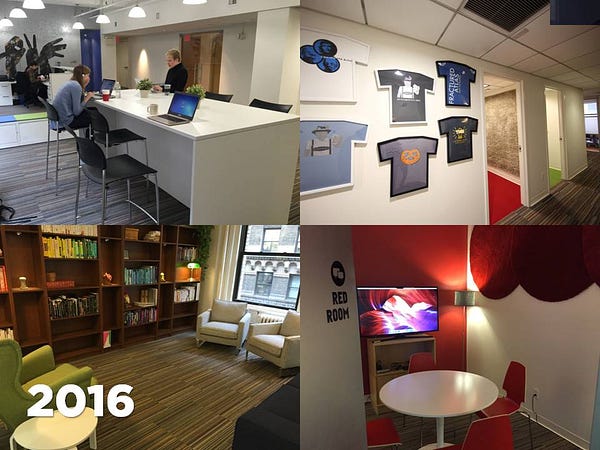
Total office renovation
This item could easily fall under Operations, but when was the last time you completed an office renovation that didn’t impact people? (Lest you disagree, stay tuned for my forthcoming post, “Human Psychology & The Office Renovation.” Check out Harvard Business Review’s take in the meantime.)
We ran out of available desk space in late 2015 and needed a solution. Seeing that moment on the horizon, we started a renovation process that took a little over 18 months — 16 months of planning, prep, and conversations; 2 months to complete — and involved a total rethinking of how people use an office environment in the 21st century versus then, say, in 1986.
For anyone who’s renovated an office before, you know about 25% of the effort is about what it’s going to look like, project managing, ordering, contractors, etc., the remaining 75% is the related staff conversations. The percentages shift even more if the renovation includes eliminating private and semi-private offices (for everyone of us, including the CEO), “unplugging” people from dedicated workspaces in favor of a locker, laptop, and workspace flexibility. Again, like anything we do at Fractured Atlas nothing is ever “finished”. A few months after we moved back into our renovated office we circulated an employee usability survey and began tweaking the new space.
Professional Employer Organization
How many people love their payroll provider? We didn’t. It was the devil we knew for years, but was getting impossible to bear. In 2016 we finally switched services!
In searching for a new payroll provider, we quickly realized that the landscape had changed and if we were going to go through the hassle of changing providers, we had a rare opportunity to level up service. While professional employer organizations have been around for decades, they only recently gained increased prominence with the use of sleek software and a plethora of start-ups wanting to outsource their HR function.
After our long search, we landed with Justworks. Not only did we get a new payroll provider with 21st Century software UI, but we also instantly gained a national insurance network providing our staff working in 10 different states with medical, dental, and vision insurance options that, prior to the switch, had been a slow state-by-state slog. The system now allows each staff member to more easily manage their payroll deductions, insurance-related issues, and requests for time off, all without ever needing to contact a member of the People team. We’re leveraging the Justworks team to supplement our small People staff, freeing up precious time to work on other important things, and in the process creating a more powerful service for each of us.
Switched our 401k providers
That right, watch out world! When we get rolling switching away from sticky vendors, we blow out the cobwebs and keep rolling.
After Jillian and I read Josh Brown’s Backstage Wall Street, we became increasingly convinced that our current 401k was more a vehicle to make money for the provider, and less about giving our employees the knowledge and tools they needed to make smart decisions about how to plan for life.
Like a payroll provider, a 401k provider is extremely sticky. The whole industry is built on inertia, and it’s a huge lift to change. You need to be really pissed and really motivated to change providers, which after countless requests to help our staff were denied, we were both. We felt it was important for staff members to be able to meet one-on-one with a certified Personal Financial Planner. We knew from a staff financial wellness survey that people wanted to eliminate college debt, save to buy a house, and/or prepare to start a family and eventually send those kids to college. We all needed the peace of mind that comes with having a conversation with someone who could help us evaluate our personal risk profile and prioritize where, and how, we saved for the future.
One of the things we learned in spades from this switch is that nothing is ever “5 Easy Steps”. Multiply the steps by ten and then you might be in the ballpark. It was a heavy lift to transition providers, but in the end, we’re all much happier with Ritholtz Wealth Management than with our previous provider. Much happier and much more informed that how we’re saving is in line with where we individually want to go in life.
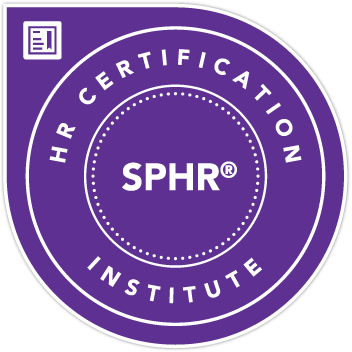
Senior Professional in Human Resources Body of Knowledge
Much of what we do with People ops at Fractured Atlas is variate on a theme. Theme: Vacation days. Variation: Unlimited vacation days. While unlimited days off is cool and all, it’s important to know how and how far we can vary from the theme.
We needed to have a better understanding of the guardrails required by employment law and the related organizational behavior implications. For this reason, we felt it was important that we have more than an HR for Dummies understanding of the various laws and regulations that guide People policies. In the first part of 2016, I studied to take and pass the exam to become a certified Senior Professional in Human Resources (the CPA of HR). In 2017, Jillian will begin studying to pass the PHR or SHRM’s CP version of the exam so we can deepen our bench. And this knowledge didn’t come a moment too soon…
Build a humane, respectful, and trusting hourly pay structure
While the jury is still out on whether the proposed changes to the Fair Labor Standards Act regarding non-exempt levels will be enacted, we decided shortly after the news was released in last Spring that we would move an entire staff tier to hourly, non-exempt (from overtime) regardless. We didn’t want to mess around with people, their roles, and compensation, and then at the eleventh hour pull the carpet out from under them if, as happened, a legal challenge paused the game. We felt it would be disrespectful to our people to leave them in limbo while things that are completely out of our control played out at a speed completely out of our control.
In trying to create a broader hourly structure for Fractured Atlas, we quickly realized that hourly pay systems often result in distrust, antagonistic, and petty squabbles between employers and employees. We’ve spent years building a Fractured Atlas culture that trusts people to do the right thing, gives them the appropriate level of autonomy to get it done, invests in their career development, and all in a “Work Hard. Live Well.” environment. That’s easier when you’re not punching a clock. Far more difficult when you introduce a remote work structure, flexible schedules, and fluidity between teams, all while trying to avoid overtime as the default. Through countless interviews, research, and focus groups, we feel like we landed in a place that creates the basis for an hourly employment structure we can be proud of and that others might want to adopt. It’s certainly not complete— as if anything we work on is final — but we have the outline and trust that together we’ll all invent something we can be proud of.
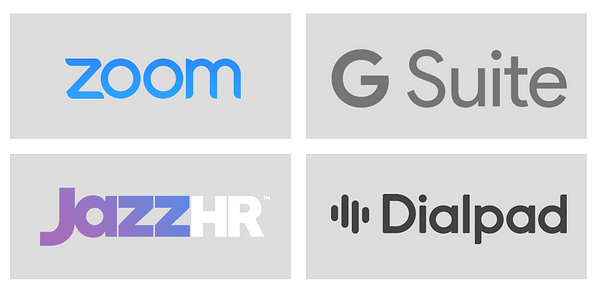
Hardware & Software Changes
Tools change and evolve over time. GeoCities, anyone? A company that knows how to successfully transition from one tool to next, without imploding the ability for people to communicate and complete their work, has a significant edge over one that clings to old, outdated tools that have outlived their usefulness. While the former can be nimble, innovative, and opportunistic, the latter often stagnates.
It just so happened that 2016 was as big year for hardware and software tool transitions at Fractured Atlas. Much of these transitions were driven by our broader How We Work movement, adjusting how people physically work to fit various styles rather than prescribing the exact thing for everyone.
Real Phone to Softphone. The first hurdle to clear when liberating staff from a sedentary styles was eliminating real phones in favor of a “softphone” solution. Softphones (often referred to at VoIP) run through the internet and operate any place staff want to work — the office, their home, a coworking space, an airport or hotel — any place that has an internet connection is now be a phone booth. Previously you needed to be sitting next to your phone at your assigned desk, or dial in to check your messages. (We actually transitioned through two softphones solutions landing first with Twilio and ultimately with Dialpad.)
Desktops to Laptops. The next big necessary change to enable people to have mobility was to give them computers that were mobile. We moved everyone off of old desktop machines and onto MacBooks or Lenovos, depending on their Mac/PC preference and the type of work they did. These two changes really set the staff free. More than 25% of our staff are fully remote across 10 states, with an additional 50% of staff working remotely 1–2 days a week. This doesn’t even include those who travel or are sick but not “sick sick” and decide to work from home rather than risk infecting their coworkers at HQ with the flu.
Video conferencing. With personnel flexibility and fluidity, we use video conferencing software constantly. It’s a rarity for a meeting not to include at least one person on video. It’s sometimes faster and easier to jump on a video call with someone than hash out the thing in an extended email back-on-forth. We originally used Bluejeans but recently switched to Zoom. (#ProTip: Regardless of the software solution you select, always ask if they offer a discount for nonprofit organizations. We’ve found that most companies do even if they don’t publicly list one on their site.)
Email and calendars. A few weeks ago we transitioned away from an email and calendar application called Zimbra — one we’ve used for years — to G Suite (Google’s new name for its Google Apps). When we originally opted for Zimbra, Google’s business-level service wasn’t nearly as robust as it is today. This became one of those platforms that we decided was no longer in our best interest to maintain using our internal software developer resources. With our switch to G Suite, those developer resources can be more effectively deployed building and maintaining cool and helpful things for our membership.
Applicant tracking system. Lastly, for the past few years we’ve been trying to improve the process for people who apply to work at Fractured Atlas. The old email process was inefficient when processing 300+ applications for a job opening, and it didn’t allow us to easily communicate with people who applied. It certainly didn’t live up to the level of customer service we aim to provide. We wanted to find a way to make the process more humane and responsive. While we’re still honing it, we transitioned to an applicant tracking system called Jazz.
(We are incredibly fortunate to work with Shawn Anderson, our Vice President of Engineering, who helped us figure out and deploy many of these options. Thanks, Shawn!)
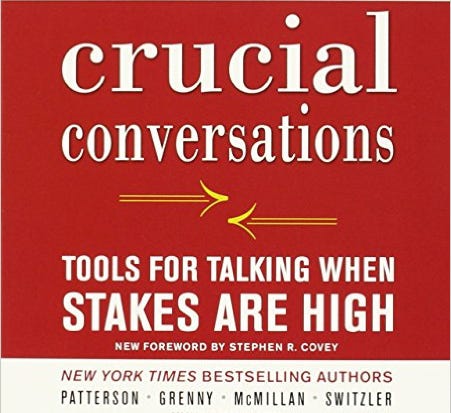
Tools for talking when talking turns tough
Research shows that one of the traits of high performing teams is the ability to engage in healthy conflict. We knew this was an area that we needed to improve. We realized as teams, and as an organization, we weren’t getting better at having healthy conflict in our meetings, we were getting better at avoiding the topics that lead to conflict. We needed tools and a shared vocabulary to help us feel better equipped when the talking turned tough. In researching a framework to use, we uncovered an entire conversational cottage industry.
We looked at Crucial Conversations, Difficult Conversations, and Fierce Conversations. It quickly came down to Crucial and Fierce, ultimately feeling that Crucial Conversations (or CruCon as we affectionately call it) would be a better fit for what the entire staff needed right now; although, referencing a few of the things we really loved from the Fierce framework. Both Crucial and Fierce allowed us to have one staff member initially trained as a certified internal trainer, so we could break up our staff into training groups, and then continue to come back to the training without the added expense of continually hiring an outside facilitator. Has it eliminated unhealthy conflict or the avoidance of conflict? Nope, have you met human beings before? It has improved our willingness and ability to have crucial conversations both at work and beyond.
Launched staff anti-racism and anti-oppression training
Fractured Atlas recently penned a post describing the important anti-racism and anti-oppression work we’ve been doing as staff over the past year. While we’ll be sharing more in the coming months about the process, if you haven’t read that post I invite you to take a few minutes to check it out. From a People ops perspective, this past year has focused us on how our work influences, supports, and sometimes hinders, anti-racism and anti-oppression efforts. It has caused us to examine our personal biases and assumptions to ensure that the work we do isn’t inadvertently or otherwise undermining that work.
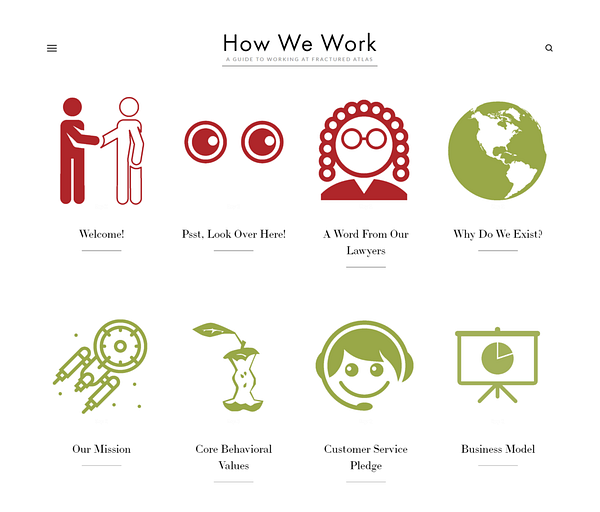
Published How We Work: A Guide to Working at Fractured Atlas
One of the biggest milestones for People ops this year was launching our How We Work website. It was a long time coming, you might say 18 years. It’s a site that captures in one place our philosophy of work and life at Fractured Atlas. The public site serves both as one half of our employee handbook and a creative commons resource for anyone who wants to borrow an idea or two for their own organization. We published it in this way as we believe the openness and transparency help us all. It helps fuel the conversation so we can become stronger organizations and a stronger cultural sector.
Fractured Atlas Staff
Staffing changes
And lastly, we close with a traditional People people item: staffing. We recently tallied that during the past 18 months there have been 24 staffing changes at Fractured Atlas, including four people who moved on to other jobs and two who left for Grad school. (For the record, our average staff tenure at Fractured Atlas is 4.9 years, which I actually think might be trending a bit too long, but I’ll save that for another post.) About 10 were internal staffing changes — promotions, new positions being created, sliding laterally from one team to another, etc. — and the rest were new hires. As anyone in the People space knows, it’s not just hiring and on-boarding that are accompanied by a long list of “actionables.” Off-boarding and “in-boarding” have long lists too. Set-up or shutdown various online accounts, insurance enrollments or COBRA coverage, set-up or scrub laptops, scheduling and conducting Core Curriculum training or farewell parties, and the list goes on. It was only after we tallied the 24 that we realized, oh, that’s why we’ve been so exhausted recently.
Keeping the trains running and on time is no small feat in an environment experiencing constant change. It’s one of those true pleasures though to do it at a place and with a team where it seems less like drudgery and more like you found the winning lottery ticket in your pocket. We’ve learned a great deal this past year and are sitting on a treasure trove of helpful information. Ping us if you have questions.
OK, 2017, let’s dance.
Tim Cynova is a leader, HR consultant, and educator dedicated to co-creating anti-racist and anti-oppressive workplaces through using human-centered organizational design. He is a certified Senior Professional in HR, trained mediator, principal at Work. Shouldn’t. Suck., on faculty at New York’s The New School and Canada’s Banff Centre for Arts and Creativity, and for the past twelve years served as COO and then Co-CEO of the largest association of artists, creatives, and makers in the U.S.
Announcing the 2016 Unsung Heroes of Arts Administration
2016 Unsung Heroes of Arts Administration
By: Tim Cynova // Published: September 14, 2016
On September 4, 2016, I placed a call for the Unsung Heroes of Arts Administration, a sort of Bat signal in blog post form. In placing that call, I hoped it would be a simple and fun way to recognize some of those culture warriors in our field who seldom receive public recognition for their efforts, and without whom “the show” would decidedly not go on.
I was incredibly humbled by the response, both by the number of times the article was shared and by the caliber of nominees that the call yielded. It was far from what I ever imagined when I rolled out of bed on the morning of the 4th and penned that post.
Saying thank you, or giving someone a sincere compliment, is one of the easiest things we can do to show our appreciation, yet it can be remembered for a lifetime.
A number of people have asked me what I was hoping to achieve when I published that post. Essentially they wanted to know, since I wasn’t handing out bags of cash or doing this as an official initiative of the company where I work, what gives? Here’s what gives: Saying thank you, or giving someone a sincere compliment, is one of the easiest ways we can show our appreciation for their efforts. It doesn’t have to cost any money or take up a ton of time. The seemingly simple gesture of saying thank you, telling someone that they and their contribution are valued, can remain with the recipient, motivating and encouraging them for their lifetime. Recognition is too rare of an occurrence for really no good reason at all. It’s not like we’re searching for a unicorn under a double rainbow.
I’ll wager that I’m not the only one who doesn’t say thank you enough to friends, family, coworkers, and complete strangers. Part of the reason behind the Unsung Heroes was to serve as a reminder to me to say thank you more often. To the “bag of cash” argument, studies show that at the end of the day it’s not the monetary rewards people find meaningful, but the simple act of someone taking time to recognize their efforts. Don’t get me wrong, none of us would turn down a little extra spending dough, but monetary rewards are for the most part ephemeral. When it comes to things we’ll remember throughout our career, what we did with the cash quickly fades in contrast to the thoughtful words of another.
If I told you that I teared up while reading the incredibly heartfelt nominations people submitted for their colleagues I would not be lying.
When the nomination period closed on September 30, I read through the nominations and quickly realized that I needed to call in reinforcements to help me select a representative sample to recognize. If I told you that I teared up while reading the incredibly heartfelt nominations people submitted for their colleagues I would not be lying. (This was also a warning I passed along to each of the panelists who helped me select the heroes below.)
Six brave souls, presumably armed with a box of Kleenex, served on the virtual selection panel. The panelists are people who I greatly admire and consider to be unsung heroes in their own right. Their tenures in arts administration span from a few years to over 30 years. They’re scattered around the United States, and hold (or have held) positions in our sector from CEOs, Vice Presidents, and Senior Directors, to those just settling into their careers with titles like Director of Community Relations. Their backgrounds and work impact all aspects of the creative sector and, fun fact, at least one has run a marathon.
The panelists were given this criteria to help guide them in the selection process:
Unsung heroes of arts administration are the individuals who keep the trains running on time, who will never be handed the microphone at the annual gala to “say a few words,” who won’t have the opportunity after a career in the cultural sector to give a curtain speech, or even make the announcement asking us to silence our cell phones. Those veterans and rookies for which we all know full well that the show would not go on without them. Those people who make our workplaces more pleasant, including those who might secretly keep watering the office fern no matter how hard we try to kill it.
I also offered that panelists could go with, “You know one when you see one,” if that made it easier. Panelists were asked to rank and send me their top five. When returning their rankings here’s a sampling of the messages that accompanied them:
Okay, this was just plain difficult. So many wonderful stories and people deserving of recognition. But you forced me to vote for five so here it goes (can you feel my pain?).
I see what you mean about tearing up while reading these submissions. It is incredibly hard to choose just five from this impressive array of deserving candidates, but here are my Top 5:
It was really touching to read these. My list is a group of folks who add pops of joy in people’s lives and/or are the calm in the storm.
This was a task both difficult and joyful. Difficult because there are so many doing such good, hard work that it makes it impossible to choose just five. Joyful because there are so many doing such good, hard work that it makes me appreciate anew every arts worker’s passion and remember that this is the only the tip of a massive iceberg that floats art. And it reminds me how heroic our field is.
This reminds me how heroic our field is.
So, without further ado (and in alphabetical order), the 2016 Unsung Heroes of Arts Administration accompanied by a few quotes from their nominators:

Rosalind Barbour
Administrative Chief of Staff, The Public Theater (New York, NY)
Rosalind has moved up the ranks of The Public Theater from being an assistant to the Administrative Chief of Staff. She’s responsible for our government relations, comes up with incredible ideas for how to move the organization forward and leads the way in pushing for systemic change within the organization. In the past year alone she envisioned and put into a place a panel for Theater Communications Group with Oskar Eustis and U.S. Ambassador to the United Nations Samantha Powers about soft diplomacy. Rosalind took care of EVERYONE’s Hamilton tickets — from the Obamas to the Clintons, and she led the initiatives around creating a welcoming environment for the trans and gender queer communities in our building. She is a quiet dynamo and is the last to take credit for her many jobs well done. I know firsthand that Rosalind is not only capable of making anything possible, she is also deeply committed to the values of our organization and to building an equitable and just society.
Julie Briggs
Finance & Membership Manager, LA STAGE Alliance (Los Angeles, CA)
Julie Briggs, our Finance & Membership Manager, has been with the organization longer than the rest of us put together. (Literally, I just counted.) Julie is the money lady (with the old-fashioned calculator on her desk to prove it), the HR lady, resident historian & human concierge service for the LA theatre community. Truly, she often spends quality phone time with some of our oldest ticket patrons who just want to know what’s playing where? What’s good? She’s also taken it upon herself to act as a much-needed facilities manager. I once arrived on a Monday morning to discover that Julie had come in over the weekend to scrub and spot-clean the carpet & re-pot our large, sad, wilting plants. She’s also the one who ends up on hold with the cable company when they’ve inexplicably increased our bill again. Julie also has the biggest heart of anyone I/we know. She is the epitome of the nonprofit arts administration work ethic recipe: the time, the elbow grease, and the love for the art/community we serve.
John Del Gaudio
Interim General Manager, The Bushwick Starr (Brooklyn, NY)
John is the reason risky, ambitious, beautiful plays are able to happen in NYC! Seriously. He champions playwrights who need a place and he is the calm in the storm that is NYC downtown theater. He is capable of making the dream possible by encouraging the audacity of the dream while simultaneously working on the logistics to make it possible. A truly humble and compassionate champion of humans. He doesn’t want credit and would probably be horrified about this in the first place. He understands and identifies underdogs who haven’t even considered their potential. I think he’s truly the example for compassionate administrating and producing. John has integrity and wit, personally and professionally. John quietly urges collaborators to put down the nonsense and proceed. John listens. John has wildly smart things to say, rooted in experience. His confidence in me gave me opportunities to work with artists who would have been beyond my reach otherwise. I’ve seen him make things happen that seemed impossible. He truly is the invisible glue that holds shows together. John Del Gaudio is truly a magic maker!!!
Rueben Echols
Associate Director, Black Ensemble Theater (Chicago, IL)
Rueben has a heart for the arts that moves him to go above and beyond the call of duty EVERY TIME!! Whether it’s giving young inexperienced artists advice and tips on how to be more successful in auditions, or spending extra time with people struggling to get choreography. Many times I have witnessed Rueben spend his own money when funds weren’t available in the budget for a production. In addition to money, Rueben gives his TIME, he’s never too busy to help someone with a monologue, a ride home, food, or just be a listening ear. He is always doing nice things for others whether it’s buying snacks for rehearsal, planning a celebration for someone’s birthday, or just giving an encouraging text message. I can’t think of anyone more deserving of this award.
yoshi kuroi
Interim Managing Director, New York Neo-Futurists (New York, NY)
yoshi’s dedication to their work, their colleagues, and the artistic output of their company is beyond which I’ve seen exhibited by anyone else in my time with the New York nonprofit arts scene. Always ready to step in where needed, yoshi has worked their way up from an unpaid intern, to technical associate, to Interim Managing Director with the New York Neo-Futurists. To say “lifesaver” would be an understatement, yoshi is the grease that keeps the production machine running. I can imagine it coming to an immediate grinding halt without the dedication, swiftness, and presence of mind that can only be fulfilled by this considerate, reasonable, and just all-around goddamn luminous being. yoshi lifts up everyone around them and has been instrumental in bringing more visibility to those affiliated with the company who identify outside the gender binary. There’s always another fire to put out, or a personal crisis that needs to be resolved, and yoshi is there like a goddamn superhero every time anything needs fixing.
Cindy Mahoney
School Registrar, Princeton Ballet School (Princeton, NJ)
Cindy is the glue that keeps our organization together. She knows the ins and outs and every detail in between. Cindy knows the families and can attend to their needs, while attending to the faculty and staff as well. Cindy is a champion of the Princeton Ballet School, working tirelessly and long hours to keep us going. She is one of the most dedicated people I have ever encountered. Every day I feel gratitude to work with someone like Cindy. She helps make my job a joy, and I look forward to coming to work every day because of her. It is with great enthusiasm and joy that I nominate Cindy Mahoney as an Unsung Hero of Arts Administration!
Tom Morris
Director of Administration & Operations, The Santa Fe Opera (Santa Fe, NM)
Tom stays behind the scenes, his praises unsung. He arrives earlier than anyone else, leaves later than anyone else, and oversees a legion of employees from ushers to front office managers. He is the first to respond to a patron complaint. He is the first to react when the computer network goes down. And he is the first to say that he is just one player on a very large team. Tom Morris is a tenacious, good-spirited arts administrator and one of the field’s unsung heroes.
Luz Perez
Director of Special Events, American Conservatory Theater (San Francisco, CA)
Luz is an amazing events director. She calms the chaos into order, supports and molds any chairperson’s visions, and is responsible for literally millions of dollars in revenue. She’s also the beating heart of her department, and our company. She volunteers willingly for tasks above and beyond her job. She remembers every birthday (with highly decorated work stations), every work anniversary (with champagne), every special day (with whatever is needed). She holds a decade of institutional knowledge and relationships, and she magically appears at that moment, the moment when you just can’t handle another thing, the moment every nonprofit worker always hits at some point, when you’re going to cry, quit, or both; that’s the moment that she appears, with cherry pie and Cheetos and the most comforting hug in creation. And she does it all cheerfully, never being formally recognized, and always seems puzzled when you admire her superhero qualities.
Karen Racanelli
former General Manager, Berkeley Repertory Theatre (Berkeley, CA)
Karen Racanelli has been a behind-the-scenes arts administrator in the Bay Area for well over 30 years and is truly one of the unsung heroes of the nonprofit theatre world. I can’t think of a person in the Bay Area who has touched more lives, mentored more people, and is loved by all. Her sense of humor, fairness, ability to listen to the needs of others and her ongoing dedication to the arts is unparalleled. Karen has mentored, nurtured and led the next generation of arts administrators from the sidelines. She has no ego in her work and shows graciousness to all. She truly has a passion for the art and you can see it in her relationships with artists, her colleagues, and in her work ethic. Not only does Karen model healthy behavior on how to lead a life in the arts, she consistently clears a path for others to thrive. She illuminates successes, she consoles setbacks, she finds humor in the ridiculous, and she mentored an entire generation. It sounds simple but she is a rarity. By simply being herself, Karen makes you want to excel in not only your professional work but in also being a better human being.
Amy San Pedro
Co-Founder, Buskerfest Miami (Miami, FL)
Amy has been tirelessly working to support and expand the cultural community of Miami for over ten years. She does this through an incredible number of channels. She co-leads a nonprofit dedicated to putting local performers in public spaces. She performs with and helps run the 6th Street Dance Studio in Little Havana, which gives free community classes and inexpensive professional classes. She also chairs the local chapter of Emerging Arts Leaders, which produces monthly meet-ups for the cultural community. And she never gets recognized for her incredible effort and dedication to these causes.
Les Snow
Program Manager, CERF+ (Montpelier, VT)
“Program Manager” doesn’t do justice to what Les does. He’s really our Master of Disaster. Les oversees CERF+’s emergency relief programs. Each day he’s on the front lines of helping artists who’ve had emergencies. These are not just setbacks, these are MAJOR crises — the woodworker who nearly cut his head off in a table saw accident, a recent art school graduate whose metals studio of works-in-progress and completed pieces was cleaned out in a devastating theft, an off-the-grid furniture maker whose home and studio were lost in a canyon fire ignited by lightning that hit a power grid miles away. And Les has been there for artists in disasters with names: Katrina, Irene, Sandy to name a few. Right now he’s working with artists in Louisiana who suffered losses in the floods. Les is the calm in their storm. He works tirelessly and quietly with each person — sometimes writing their application for them. He’s generous with his time and bends over backwards to be helpful. He is OUR hero!
Thank You! Thank You! Thank You!
Thank you to those who read and shared the initial post. Thank you to those who took a moment to nominate such deserving colleagues. Thank you to all of our unsung heroes of arts administrators — named here or not — you make the world a better, more beautiful and enjoyable place!
Tim Cynova is a leader, HR consultant, and educator dedicated to co-creating anti-racist and anti-oppressive workplaces through using human-centered organizational design. He is a certified Senior Professional in HR, trained mediator, principal at Work. Shouldn’t. Suck., on faculty at New York’s The New School and Canada’s Banff Centre for Arts and Creativity, and for the past twelve years served as COO and then Co-CEO of the largest association of artists, creatives, and makers in the U.S.
The Impending Leadership Gap Crisis That Isn’t
Published: September 26, 2016
Over the past ten years or so I’ve heard countless times, and in countless venues, about an impending leadership gap crisis facing the cultural sector. The theory goes, scores of Baby Boomers are getting ready to retire from leadership roles in arts organizations, and we’ve done a poor job building the pipeline to replace them. If we don’t address this crisis, countless organizations will be left adrift without a capable captain, or worse, they’ll disappear entirely. If only we were a for-profit company with the means to create a formal training system we would be in better shape to withstand this sea change. If only we could pay young people better they wouldn’t leave us for those higher paying for-profit jobs.
I’ll grant you we’ve done a relatively poor job investing in our people at all levels of the organization — see also my ”Investing In Our People” post — but I don’t believe this is leading to some existential crisis threatening the collapse of the entire cultural sector. Really? Our sector is going to fall to pieces because of something people have been doing for thousands of years — retiring and letting other people take over.
Cemeteries are full of people who thought they were indispensable.
Calgary Cemetery, Queens, NY
Growing up the son of a Lutheran pastor in Indiana I spent more than my fair share of time in cemeteries. (When your dad’s occupation includes conducting the funerals for those you know, it makes more than a passing impression on you.) When thinking about whether or not there’s an impending leadership gap crisis, I’m often reminded of the quote, “Cemeteries are full of people who thought they were indispensable.”
The day will come at some point when I cease to work at Fractured Atlas. I hope when that day comes the powers that be don’t hire my carbon copy. What a wasted opportunity. I do a fairly decent job of being Tim Cynova, and have built systems and the position to some extent to adjust to how Tim Cynova works best. I’d hate it if someone tried to step into the role and run it that way.
Someone will take over, and they’ll do things that I might disagree with if I were still at the organization. How many leadership transitions occur and the predecessor says, “That’s exactly how I would have done it.” No? Good! When that happens it’s usually a missed opportunity. Will my future successor nix things that I find important and am hugely passionate about? Perhaps. Will they take my name in vain as they struggle to figure out why I’ve been doing a few things in seemingly so strange a way? Oh, highly likely. (To that person: Sorry about the server closet.)
Will they know everything I do and be able to look at something and quickly understand it? Probably not. But there’s a whole host of things that I don’t know, wouldn’t know, can’t do well, or struggle with that others will be great at.
You know who’s not worried about an impending leadership gap crisis? Young people.
Future leaders. Lots of them. As photographed by James Cridland.
As I pondered the leadership gap crisis argument, I quickly realized something. You know who’s not worried about an impending leadership gap crisis? Young people. And when we were 26, we weren’t either. Chances are we thought we knew all, or most, of the answers or could figure them out when the time came. We were 26. We wanted more responsibility, more autonomy, more fame and fortune-ish.
“The young do not know enough to be prudent, so they attempt the impossible, and achieve it, generation after generation.” — Pearl S. Buck
One needs to possess a certain level of naïveté going into a leadership position. If we, in leadership roles, knew before we got into this what an average day would hold, how many of us would we have leapt at the opportunity? Meeting with disgruntled staff, donors, and board members all day long? Government contract reporting? Sleepless nights worrying about how to make next week’s payroll? HVAC flooding your offices and your relaxing weekend plans suddenly involve a mop, bucket, and large industrial fan? Sign. Me. Up. (I should say for the record, the HVAC system is the only one currently keeping me awake at night.) No, you start off in the direction you think you’re supposed to go and ask for directions along the way when you realize, hopefully sooner rather than later, that you’re in Austin and should be in Boston.
That same naïveté is what allows people to see new solutions to old problems. Or figure out why that thing we failed at a few years ago will work now. Sometimes when people figure things out for themselves, or reinvent the wheel, it produces a better wheel. A wheel better suited for the current situation and environment.
If we want our organizations to look like and operate exactly as they do now then yes, yes there will be some type of leadership gap.
This impending leadership gap crisis theory rests on one very large assumption: that organizations should continue operating and providing their services in largely the same way as they have been. However, organizations, the needs they serve, and how they address those needs are constantly changing. Therefore we need leaders who can change and adapt and build upon what went before them. (Sometimes “building” means taking apart and reassembling to be more efficient and effective.) This is a giant opportunity to question everything from the ways our organizations operate to yes, their very existence.
Success shouldn’t be judged by the number of years an organization has existed. Success should be judged by the impact it makes. Sometimes organizations and leaders can do very bad jobs at that for a very long time. Inertia is a powerful force.
But for-profit companies…
The “successful for-profit company” argument ignores two big points. First, it’s not all that easy these days to land one of those “high paying for-profit jobs,” and two, it neglects that the majority of for-profit employers are small businesses too.

Think of all the “Walter & Sons Hardware” stores around the country where the “sons” in question decide they’d rather be a choreographer and arts administrator than take over the family business. Now Walter is in a similar predicament. Oh no, it’s the end of screws, keys, and plungers! Does the store’s closing negate his life’s work, or the decades of assistance he provided to his friends and neighbors? No. Even the best bands call it a day at some point (I’m looking at you Tokyo String Quartet. #tear).
Leadership transitions are an opportunity for fresh ideas to see the light of day unburdened by the past.
Leadership transitions can be like opening the windows and throwing back the curtains. Fresh air rushes in and sunlight bathes the dim parts of our organizations. That thing we’ve been doing for years that is horribly ineffective but there was too much emotion and inertia built into it to stop doing it? Poof, gone. That person who wouldn’t grow their skills to adjust to the new needs of the organization but they’ve just been around forever? Poof, gone. New ideas and new energy are good for everyone, even those people in the latter group who might find themselves without a job. Sometimes we need that push to help us find and reignite our passions.
This is a good thing for all of us. It could be uncharted territory for both the people and the organization. It could shutter what leaders have worked their entire lives building. That doesn’t take away the work that was done. Things evolve into something new and different and build upon the foundation these leaders built. Things serve a purpose for the time they exist and then other things take their place. The Flowbee? One haircut. Then you realize your vacuum cleaner shouldn’t also be cutting your hair.

Where are all the leaders of the future?
Great news! We can stop worrying about an impending leadership gap. There are legions of people out there who are skilled leaders in other facets of life, or have leadership potential. People who will quickly rise to the occasion when given the opportunity. Just take a gander at the staff listing on your website to find them. (You’re welcome.) How many times do people surprise us by stepping into the breach during a crisis or a leader’s absence? Leonard Bernstein anyone?
There are plenty of people to fill any valuable role we need. The earth has a billion more people on it then when I joined the workforce twenty years ago. At Fractured Atlas, we routinely have 300+ people apply for one position. Can you imagine how many job seekers want an open position at Google or as the conductor of the New York Philharmonic? I’d wager a lot more than 300 people. It’s less about whether these leaders exist and more about structuring a reconnaissance and matchmaking process to find and place them. Rather than worry about a fictional crisis, let’s spend our time working to identify and connect with those people who are passionate about our work and who don’t find out about us from the ads we place on the NYFA Jobs Board (no disrespect meant to the NYFA jobs board).
There’s an entire cottage industry of arts administration and social impact MBA programs that are churning out graduates with new and different skills than what current organizational leaders had when they joined the workforce (myself included). They don’t need my well-worn copy of Accounting for Dummies to decipher audited financials or oral legend to help them create a marketing plan for their season. I still quibble with freshly minted graduates who think that taking Professor Smith’s fundraising course now qualifies them to be the Director of Development for that $100MM campaign. But the young see only possibilities. That’s more good than not.
Looking for candidates and not finding them? Maybe you’re being unrealistic. God already has a job. Maybe you’re doing a poor job of articulating why someone would want to work at your company? Maybe you’re barking up the wrong tree and need to try a little harder to connect with people who would make better candidates. (Take a look at the book Who if you find yourself in this boat.) Maybe your company’s mission is no longer relevant or its relative importance is not what it once was. The telegraph ceased to be as important when the telephone came into being. The handheld camcorder — may it rest in peace — became obsolete when Apple launched the iPhone.
How much training does a leader need?
How much leadership training did current leaders have before becoming leaders? How much leadership training does one really need before they become a “leader”? Invest in staff regardless. Invest in staff not necessarily so they’ll become leaders but so they’ll be more effective at whatever they choose to do in life. (Not every talented person wants to — nor should they — lead an organization. See the Peter Principle.)
I’m not suggesting here that we just send wholly unprepared individuals into leadership roles. I’m just saying that “prepared” is a relative term that differs from situation to situation. Tomorrow’s leaders shouldn’t be carbon copies of today’s leaders. Nor do we need to train the next leader of an organization to have the skills and knowledge the departing leader acquired over 40 years in order for that new person to be successful. How much and what kind of professional development is the right amount? It depends, right? It depends on the situation, the organization, and the person.
If we hire people for the things that can’t be taught, we’re headed in the right direction. When worrying about the leaders of the future let’s focus on the things they can’t learn from the Dummies book series or Lynda.com. Grit, caring, drive, empathy, integrity, honesty, trustworthiness, openness. The other things can be learned along the way and far easier to retain when they have an actual use case. (Learning about financial statements when you don’t use them on a regular basis is a theoretical exercise until the rubber meets the road.)
Lastly, people of all ages make mistakes. Big mistakes. No one is immune to making mistakes and missteps that they might regret for their careers. Mistakes that inadvertently hurt people’s feelings. Mistakes that might tank organizations. Before we’re too quick to judge and armchair quarterback, pause. People play the hand they’re dealt, when they’re dealt it, and sometimes they find their hand filled with crappy cards regardless of their training or acumen. There are amazing leaders of every age, and bad ones too.
Where to from here?
If you are a leader worried about an impending leadership gap crisis, stop. Just stop it. There are plenty of other things to worry about. Instead, let’s spend our time and energy actively investing in all of our staff. (Don’t have staff? Invest in others through mentoring.) Who’s to say who the next transformational leader will be in our organizations and sector?
Life is short. Let’s work hard, live well, invest in others, and strive to be better today than we were yesterday. We, our organizations, and our sector, all face some very real challenges. Let’s tread lightly on the fictional ones. Carpe diem, and keep an eye on that HVAC unit.
Tim Cynova is a leader, HR consultant, and educator dedicated to co-creating anti-racist and anti-oppressive workplaces through using human-centered organizational design. He is a certified Senior Professional in HR, trained mediator, principal at Work. Shouldn’t. Suck., on faculty at New York’s The New School and Canada’s Banff Centre for Arts and Creativity, and for the past twelve years served as COO and then Co-CEO of the largest association of artists, creatives, and makers in the U.S.
The Unsung Heroes of Arts Administration
Image by Flickr
Published: September 14, 2016
This morning, I awoke to read about those deserving individuals short-listed for the Man Booker Prize and thought, for all the Bookers, MacArthurs, National Medals of the Arts, Pulitzers, Barry’s Blogs, Oscars, Emmys, and Dance/USA Ernies, you know what list I never wake up to read about in The New York Times? The Unsung Heroes of Arts Administration.
We all know them. They’re the individuals who keep the trains running on time, who will never be handed the microphone at the annual gala to “say a few words,” who won’t have the opportunity after a career in the cultural sector to give a curtain speech, or even make the announcement asking us to silence our cell phones for that matter (unless they are, in fact, the person who makes that announcement). Those veterans and rookies for which we all know full well that the show would not go on without them. Those people who make our workplaces more pleasant, including those who might secretly keep watering the office fern no matter how hard we try to kill it (you know who you are; Oh, that’s not a fern?).
So today, in honor and recognition of the thousands of arts administrators who will never wake up to find their name and photo among the Pulitzer or Booker or Oscar recipients, who will never be handed that microphone to say a few words — or wouldn’t even take it if they were — but who work tirelessly every day to move our cultural sector forward, I open nominations to recognize our 2016 Unsung Heroes of Arts Administration.
Guidelines:
(1) Nominees should be arts administrators who don’t occupy the “top seat” in the organization. (Sorry one-person bands.)
(2) Click here for the nomination form. Essentially, in 1,000 characters or less, please explain why your nominee exemplifies someone who is deserving of being recognized as a 2016 Unsung Hero of Arts Administration, a culture warrior who moves our sector forward.
(3) Submit your nomination(s) by 5PM ET, Friday, September 30, 2016.
(4) A panel of our peers will review the nominations and highlight an arbitrary number of those nominated who stand out from the rest at this particular moment in time.
(5) We will shower recipients and nominees with our adoration and praise in quantities far less than what their dedication and commitment deserves, but do it with heartfelt respect for their tireless work behind the scenes to move the cultural sector forward.
What can we all do right now?
If you think, “Oh yeah, our office plants would be dead if not for X,” “People have no idea how much Y was responsible for the success of that event,” or “Z brings such joy to our workplace and it wouldn’t be the same without them,” nominate them. Probably more important though, go say Thank You! #ProTip1: Leave an anonymous Post-it of thanks on their desk (ooo, mysterious). #ProTip2: Buy donuts in the morning and unilaterally call it “[That person] Appreciation Day!”
Thank you to all of our unsung arts administrators. Nominations or not, you make the world a better, more beautiful and enjoyable place!
Tim Cynova is a leader, HR consultant, and educator dedicated to co-creating anti-racist and anti-oppressive workplaces through using human-centered organizational design. He is a certified Senior Professional in HR, trained mediator, principal at Work. Shouldn’t. Suck., on faculty at New York’s The New School and Canada’s Banff Centre for Arts and Creativity, and for the past twelve years served as COO and then Co-CEO of the largest association of artists, creatives, and makers in the U.S.
How We Work: A Guide to Working at Fractured Atlas
By: Tim Cynova // Published: September 13, 2016
This week Fractured Atlas published How We Work: A Guide to Working at Fractured Atlas. It’s a document that’s been in the making ever since we opened our doors in 1998, and it’s the result of years of conversations, research, experimenting, and iterating. Within minutes of publishing, we were already tinkering with it, a nod to the ever-changing nature of life at Fractured Atlas.
work.fracturedatlas.org
Why publish this document publicly?
Why not? What’s so special and sacred about workplace policies, values, and culture that we often keep them under lock and key? Every company has core values whether they articulate them or not. Every organization has a set of guard rails that guide its work. (Those guard rails might be close together or miles apart, but they still exist.) Our organizations, and the cultural sector, benefit from articulating these things and sharing the information so we can all borrow and iterate on the ideas like any talented artist (I’m looking at you Benjamin Britten and your Young Person’s Guide to the Orchestra).
Maybe you’re interested in a job at Fractured Atlas and curious about what it’s like to work here. Maybe you’ve heard whispers of Fractured Atlas’s unlimited day off policy. Maybe you’ve heard about our R&D pipeline for the exploration and development of new products and services. We thought the time had come to put pencil to paper, and then, uh, publish that content as a website.
It seems we’re constantly talking about workplace culture at Fractured Atlas. What do people need to do their best work? How can we find meaning and purpose in our work? If this isn’t the job you love anymore, can you craft the one you want out of the one you have? If not, where do you want to go and how can your time at Fractured Atlas help you get there? How can teams operate with trust and respect while also embracing healthy conflict? We talk about shared purpose — change the world — and shared identity — Waffle Wednesdays (usually on Thursdays) — and about what it means to have a workplace environment where you’re more frequently than not building the plane while flying it.
Our office library includes dog-eared copies of Good to Great, Nuts!, Maverick, The Hard Things About Hard Things, Delivering Happiness, Zingerman’s Staff Guide, How to Measure Anything, Multipliers, The Purpose Economy, The Advantage, Give & Take, Who: The A Guide to Hiring, Remote: Office Not Required, and countless others related titles.
We talk about what it means for our company culture and the office environment when 75% of staff work remotely at least one day a week, with 25% of staff fully remote in ten different states. Is it possible to equalize the experience so rather than onsite versus offsite, people feel they all work for the same organization and are committed to the same purpose?
How We Work isn’t a template, not even for Fractured Atlas. If we were to relaunch the company today it would be a mistake to take this document as gospel and adopt it without question. Just like trying to be Google doesn’t work for Fractured Atlas, trying to be Fractured Atlas circa 2002 doesn’t work for Fractured Atlas circa 2016. Would we borrow and iterate on some of the policies, probably. Some of them have withstood the test of time. Others? Still in the experimental phase and might not make the cut.
Lastly, does each person at Fractured Atlas wholeheartedly agree that — from their personal perspective — How We Work accurately reflects their work experience? No. Like most things we do at Fractured Atlas, smart, opinionated, talented people disagree. People disagree about how to go about accomplishing something. People disagree about the speed at which things should be attempted. Show me 35 smart, talented, insightful people who all totally agree about everything. Does that mean we wait for perfect alignment and consensus? No. We head down a path that is directionally correct and make adjustments as we go.
Please take a gander, and then, if they don’t already, encourage your organization to publish what it’s like to work there. Openness and transparency help us all. It helps fuel the conversation so we can become stronger organizations and a stronger sector. Ultimately, it helps us create better, more fulfilling and supportive places to work that make bigger dents in the universe. Share away!
Tim Cynova is a leader, HR consultant, and educator dedicated to co-creating anti-racist and anti-oppressive workplaces through using human-centered organizational design. He is a certified Senior Professional in HR, trained mediator, principal at Work. Shouldn’t. Suck., on faculty at New York’s The New School and Canada’s Banff Centre for Arts and Creativity, and for the past twelve years served as COO and then Co-CEO of the largest association of artists, creatives, and makers in the U.S.
…like drinking from a fire hose
Pre-gaming your arrival to the executive director’s chair
By: Tim Cynova // Published: August 25, 2016
It was like receiving an electronic time capsule from my younger self when the text message pinged its arrival. Last week a friend texted me the photo below of a handout I created to accompany a talk I gave about ten years ago. I don’t recall the session name, but the handout was titled, “…like drinking from a fire hose,” and contained a list of the things I suggested a new non-profit executive director review before sitting down in that fancy, new chair on their first day.
Time capsule… in handout format.
I remember explaining how sliding into that executive director chair, particularly at a new or unfamiliar organization, can feel a lot like you’re drinking from a fire hose. There’s so much information flying at you — so much signal and noise — you can struggle to make sense of it all. Pre-gaming before you actually sit down on the first day can help you get the lay of the land before being inundated with the daily battle of the urgent versus the important.
You’ll never see the organization as clearly as you do on the morning of your first day.
So thanks to my friend — who found the handout while packing to move on to her newest gig as an Executive Director (poetic, right?) — I am able to recycle the list and share it with you here.
As I scrolled through the list I thought, would I still ask for the same things? What did I think each item told me? Does the knowledge gleaned from each still carry the same weight? What would leaders I admire include on their lists or would they approach this in a totally different way?
In the end, if I were moving into the executive chair at a new organization, I think I would ask for much of the same material to review. That said, one item in particular would carry more weight for Tim Cynova circa 2016 than Tim Cynova of yesteryear:
“Schedule meetings: Individual Staff (Ask same 5 questions).”
Understanding the team, listening to them explain from their perspective the organization’s — and their own — strengths and weaknesses can yield a great deal of helpful intel. Do they hint at a toxic work environment that burns through staff? Do they use an internal locus of control or an external locus of control to describe the organization (i.e., “what can we do right now to move towards what we really want” versus “there’s nothing we can do, bad stuff just keeps happening to us”)? Do they talk about their coworkers and the work in glowing terms with everyone working towards the same purpose? Do they talk about all coming together to find solutions to significant challenges, or do they talk in terms of going it alone? Does accurate information freely flow throughout the organization, or do only a few people seem to know what’s going on?
It’s not likely that you’ll land in a place where all of the answers to these questions are positive. That okay, that’s part of the challenge. This is a fact-finding mission. You need to know what you’re working with in order to know how to approach it.
In order to play the hand you’re dealt to the best of your ability, you better first look at the cards.
Research (and experience) shows that “B” talent who function as a cohesive team outperform “A” players who struggle to coalesce as a group. No organization is perfect, even the seemingly “top flight” companies have their challenges. Assessing, adjusting, and developing your team so everyone is working together towards a common purpose is arguably the most important part of the executive director’s job. How else are they expected to achieve all of the other goals?
Tim Cynova circa 2016 walking into an unfamiliar organization wants to understand the people. What gets them up in the morning. Why do they come to work every day. What do they see as their role in the organization and on their respective teams. In their wildest dreams what does success look like and what do they need to achieve it. Without understanding these things you could set a course without knowing if you have the right people to help you get there.
I wish my friend the best in her new role. Not that she needs it. She’s already a talented leader who has accomplished exciting things in her career. But I do appreciate her for texting me that time capsule from the past.
What’s on your “drinking from a fire hose” list?
Tim Cynova is a leader, HR consultant, and educator dedicated to co-creating anti-racist and anti-oppressive workplaces through using human-centered organizational design. He is a certified Senior Professional in HR, trained mediator, principal at Work. Shouldn’t. Suck., on faculty at New York’s The New School and Canada’s Banff Centre for Arts and Creativity, and for the past twelve years served as COO and then Co-CEO of the largest association of artists, creatives, and makers in the U.S.
Investing in People
A pathway for confronting the cultural sector’s challenges
By: Tim Cynova // Published: February 1, 2016
The health of the cultural sector, and its ability to be creative, innovative, and resilient depends on the quality and skills of the people working for our organizations. In order for our sector to remain vibrant and relevant, we need to continually develop and leverage the skills our people possess.
A couple weeks ago, the Fractured Atlas staff sat down for pizza with finance guru Barry Ritholtz. He joined us for our monthly Visiting Professional Series, and as Barry spoke about managing personal assets so that they will grow to take care of us later in life, I couldn’t help but think about parallels with how our organizations grow and invest in (or don’t) our human assets.
A friend of mine once said that it’s not like arts organizations are sitting on assets that passively generate tons of cash thereby allowing them to do stupid things. Our assets are our people. How we manage and develop these assets has a direct impact on our ability to deliver results and fulfill our missions.
In the cultural sector, we hear a lot about organizational strategic plans, but very little about human resource strategy and people planning. Managers having active and regular career development conversations with their people, and leaders infusing organizations with a culture of learning is a rarity, not the norm. The very ability to deliver on those strategic plans is directly linked to the people you have helping you execute the plan. Ignore this at your organization’s own peril.
I love the above cartoon. It captures an all-too-frequent sentiment when the topic of staff development is raised. What if we invest time, energy, and money and our people still leave? Well, you’re in luck! Staff are already thinking about how much their company is investing in them regardless of whether or not managers acknowledge it. Let’s just say it now, everyone will eventually leave. That’s not a valid reason not to invest in them.
Our staff members are with us for but a short time as everyone eventually moves on for other opportunities. This is a good thing! While this “churn” can cause anxiety in the short-term, it’s ultimately good for our organizations and our sector. It allows us to continually cultivate the diversity of thought and talent on our team. It spreads new information and new ways of doing things from organization to organization. And, it allows us to build and refine our team for the challenges we face today, not those that we faced two years ago, or ten years ago, or yesterday. Our responsibility to our companies, our people, and our sector, includes seeing that we are good stewards of the assets we’re granted for the time we have them in our care.
“Learning to earn a paycheck” is not a viable staff development strategy
Staff should not bear this development burden alone. Nor is “we’ll train you for the job” (i.e., here’s your computer, access to the file server, and directions to the restroom) an adequate response to proactively helping staff develop new skills, to exposing them to new ideas that broaden their perspectives and make connections beyond our sector, and to helping them “level-up” their career prospects.
I recently read of a manager who asks her staff to bring their updated resume to their annual performance review. If while reviewing it with them she realizes that they haven’t added anything new to it in the past year, she sees that as a managerial failing — not theirs — for not helping them identify and develop new skills and opportunities for growth.
“With skill development today there is no standing still. You’re either moving forward or you’re losing ground.”
We can’t expect to simply outsource this function either and get meaningful results that will be beneficial and bespoke to our organization’s current needs. It’s a combination of efforts that will create an effective staff development environment.
What does a culture of learning and staff development look like?
Each organization is unique, so what works for one of us won’t necessarily work as a carbon copy for another. We can’t all just copy Google’s playbook on this and expect it to work “as is”. What shouldn’t be unique is having a willingness to be creative and experiment with options, and then share what works and what doesn’t so we can all benefit.
Please don’t think that in writing this post I’m doing so claiming Fractured Atlas has figured out the key to this, even for us. We’re constantly testing, iterating, nixing, and trying different offerings. Some things work for a while, some things fizzle out immediately, and some things have been with us since the beginning. Below are a few examples of the things we’re currently doing on this front.
Please let me know what’s working for you and your team. And by all means, if you think something below might be of interest to your crew, don’t hesitate to borrow and iterate on any of these ideas.
Mmm, pizza.
Visiting Professional Series
How many of your people have a chance to interact with senior-level executives who work primarily outside of the cultural sector? Maybe your Executive Director and Development Director as they cultivate donors from this cohort and work with your board of directors? It’s probably not everyday that your administrative assistant has the opportunity to have lunch with the CEO of a New York Stock Exchange-traded company.
The Visiting Professional Series was born out of that very thought. How interesting might it be to have all of our people sit down with a senior-level executive who they typically don’t have an opportunity to meet? Let’s give staff the chance to ask her questions about how she got to be where she is today. What advice she would give her younger self. Talk about how she approaches challenges that transcend sector (i.e., balancing the urgent versus the important, recharging her energy, etc.). About every month or so we host a VPS lunch. It’s a sit-down pizza lunch in the conference room where we explore these questions. Each time a different staff member serves as the moderator for our conversation to get things kicked off and keep them flowing.
“Even big-time CEOs love pizza.”
Our guests have included, among others, the Global External Relations Officer for Procter & Gamble, Co-founder and CEO of The Motley Fool, CEO & Chairman of Arbitron, Chief Investment Office for Xerox, former 6-term U.S. Representative, and the now Director of Corporate Responsibility for Amazon.
We recently started inviting our board members as featured guests in the Better Know A Board Member version of VPS. If you don’t know where to start, ask your board chair to kick things off. Then ask your board members if they can recommend any interesting candidates from their networks.
(#ProTip: Buy a bottle of wine as a thank you gift for your guest. In advance of the visit, use a silver Sharpie to write “Thank You, [First Name]” on the bottle and then pass it around the office for each person to sign the bottle too. Turns a simple gesture into a meaningful momento. Also, makes it harder for the person to re-gift.)
Image by Felix Hu
May the task force be with you
When we’re kicking around new ideas that we think might have legs, or a finite lifespan, or it doesn’t live in any one person’s domain, we’ll form a cross-organizational task force to dig in and explore it. Some companies have “20% time” where staff can use a few hours a week to work on projects outside of their “assigned” portfolio. Our task forces are more like 5–10% time. They bring together people from around the organization who don’t typically have a chance to work together on a project. Task forces also often afford staff who are earlier in their career with opportunities to develop and exercise leadership skills by chairing the group.
After a lot of trial and error, we’ve landed on some guidelines for defining the scope and specific purpose of a given task force, how long it should meet (a never-ending task force with a broad scope can be more demoralizing than energizing and effective), how many people should serve on it, and how to document the findings in case at the end of the process we shelf the idea but want to resurrect it later on. Right now we have a couple of different task forces in operation: for R&D projects (e.g., Make Time Clock and the #ArtStartUp card game), for our Arts Entrepreneurship Awards, to explore a podcast, and to create our Fractured Atlas brand book. More recently task forces have spawned “jam sessions”. Jam sessions are essentially smaller and shorter-lived versions of task forces.
For the most part, both task forces and jam sessions are scheduled whenever the group of people can find time, and we typically don’t provide any money at the onset. If something looks like it might work, we give the group a couple of dollars to take it to the next level. Then a few more dollars if it continues to be promising. If not, we wrap things up and move on. There are countless ideas we want to explore. If something isn’t panning out, move on and put something else in the queue.
Next time someone floats an idea that might be worth exploring and your knee jerk response is, we don’t have the time to look into it, ask yourself if this might be just the thing for a task force to tackle. The organization’s next big thing might come out of it.
New York’s 4th Annual Musical Chairs in Bryant Park
Musical chairs
Here’s an easy one. Rotate the person who chairs your full staff meeting. Open it up to any interested person in the company and schedule slots on a first-come, first-served basis.
Learning to chair an effective and efficient meeting is a skill that needs to be developed. Few are just “born with it”. Don’t just keep having the same person/people who can do it really well chair your meetings. It helps the organization, and the field, so much more if we have a whole host of people who have developed the chops to facilitate an effective meeting.
Like any good delegator, you might want to spend time with the designated person before the meeting to review some pro tips and help them pre-game what they can do if things go sideways on them. Also, like any good delegator, if things do slide sideways on them during the meeting, bite your tongue and don’t immediately rush in to save them. Give them a moment to wallow in the awkwardness and see how they choose to address it. In the long run, it’s better for them to develop these muscles in a setting among friends who are rooting for their success versus one where the crowd might not be as supportive.
(h/t to friend Russell Willis Taylor, most recently the President & CEO of National Arts Strategies for this piece of advice.)

Can I have an allowance?
Every staff member at Fractured Atlas receives a $1,000 professional development allowance each year that they can spend on pretty much anything — within reason — to develop their skills and knowledge in order to grow in their position and career.
We started offering the $1,000 allowance when there were only a few people on staff and we had a budget well under $1M. We’ve kept at it all these years, even as the staff has grown to number 35. When budget season comes around this isn’t an elective item. It’s treated like any other form of compensation. Often times other items in the draft budget need to be pared back or cut in order to continue offering it at the $1,000 level.
While I’m particularly proud that we’re able to offer an allowance at this level, I understand that $1,000 per person is a chunk of change that not every organization can commit to doing. If you’re not offering anything right now, even $50 can be a meaningful amount. It shows that you want to invest in your people and their future. Note: You can’t be fair weather about this though. You can’t add it this year and take it away next, even if people don’t initially use it. (See Active Career Conversations below)
Over the years, the Fractured Atlas staff have spent the annual allowance on a myriad of things. Continuing education classes, Lynda.com memberships, memberships to professional organizations like SHRM and Association of Fundraising Professionals. They have spent it to attend conferences that they otherwise wouldn’t attend because it falls outside of their position (e.g., an Administrative Assistant attended Nina Simon’s Museum Camp one year). People spend it on webinars, to attend seminars, and to pay a public speaking coach.
We have one guiding rule and that’s that the allowance can be used to purchase software but not hardware. You can buy the book for your Kindle, but you can’t buy a Kindle. The allowance is also use-it-or-lose-it and doesn’t roll over from year-to-year. So, as the end of our fiscal year approaches there’s a noticeable uptick in the number of Harvard Business Review and Learning to Code books arriving daily from Amazon.com.

Authorship for everyone!
Does your organization have a blog or a newsletter? Is everyone encouraged to author posts for them? If not, remove the firewall and start encouraging your people to pitch and develop content for those platforms. Work with them as they hone their craft, find their voice, and develop their following.
Maybe you have a staff member who loves reading and wants to create an online book club like my coworker Nathan did on the Fractured Atlas blog. Or you have a handful of staff members in your organization who want to contribute to a regular Tips & Tools column. Encouraging authorship at all levels of the organization not only develops staff members’ skills, but it also creates a diversity of thought and opinion for your readership to enjoy.
Active career conversations
This is one that pops up to varying degrees in many professional development offerings. It’s important enough though that I want to call it out here.
My friend, the late Dr. Jack Watters, once said that you can’t ignore having active career conversations with your staff. It’s not like if you don’t have these conversations your people will all of a sudden stop thinking about what they’re doing in life and how their work is, or isn’t, helping them get to the next level.
Sit down with your people on at least an annual basis to talk with them about their longer-term professional goals. Discuss what it is you and your organization can do to help them progress towards those goals. Then finally, how they can spend their professional development allowance to help grease the skids to get things moving.
Sometimes the next steps are easy. This book is great and exactly what you’re looking for. Or, you should talk with Linda over in accounting. She’s an expert in that and can point you in a helpful direction. Other times it’s more difficult. Like when you’ll likely lose a great person sooner than you want. So you want to go to grad school or start your own company? Well then, let’s make sure that we help you be as ready as possible for when that day finally comes.
Mmm, Chipotle.
Brown Bag Lunches
Did someone in your company just return from an interesting conference or complete their dissertation? Has someone been noodling around on a fun side project? Why not encourage them to share their learning during an attendance-optional brown bag lunch?
Use Brown Bag Lunches to encourage knowledge transfer and learning. Offer staff the opportunity to practice and refine their presenting skills. Enjoy each others’ company when not “talking about work.”
Some of our recent Brown Bag Lunches have included presentations from Adam Huttler about his time at Singularity U, Chap Ambrose sharing his concept for what became our R&D product the Make Time Clock, and a film screening with Fractured Atlas member and director Kevin Newbury.
Let’s Learn Together
Want to take Brown Bag learning to the next level? Encourage your people to create and teach classes for interested staff members. Google has an entire course catalog populated with employee-to-employee courses. Want to learn the secrets to superior spectating at the Tour de France? Got it. Mindfulness training? Got it.
At Fractured Atlas, our former Director of Engineering Gary Moore taught a six-week-long Internet + You course each Monday during lunch for non-developer staff who were interested in learning how the Internet works. (#ProTip: That thing you keep referring to as your “database” is likely not actually a database.) On another occasion, a group of early risers met each Tuesday and Thursday morning for ten weeks to complete a Game Theory course. Our Senior Director of Information Strategy Ian Moss created and teaches a Decision Analysis course to help us make smarter, data-based decisions. This month we started offering the two-day Crucial Conversations training to equip each of us with the tools to use when we find that talking turns tough.
As with Brown Bag Lunches, co-learning leverages our staff desire to learn and teach, and typically takes place during staff discretionary time.

Job Crafting [Pilot]
How can you create the job you want out of the job you have?
One of my favorite people in the world is Amy Wrzesniewski. She is a Yale professor of organizational behavior and an illustrious former board member at Fractured Atlas. Amy has dedicated a significant portion of her professional life to researching how people derive meaning from their work. Why do some people view their work as “just a job,” while others see it as a career, or even a higher calling. Through her research, she and two of her colleagues developed a framework for something they call Job Crafting. (They even created this handy toolkit so you can play along at home.)
It’s not always feasible or desirable to change jobs or companies. Maybe you really like the organization you work for and the people you work with, but your actual day-to-day work has become less fulfilling over time. It’s at this intersection where we’re testing the job crafting framework at Fractured Atlas. What is it about the job and work that, if tweaked in some way, will give you that needed boost of energy and meaning.
Legendary Canadian coach Sheldon Galbraith
Deputized Coaches [Pilot]
One of the exciting things we’re beginning to pilot at Fractured Atlas is the idea of deputizing a handful of people throughout the organization to serve as coaches in addition to their formal roles. Last year, I spent my professional development allowance to attend Zappos’s Coaching Camp. I also visited The Motley Fool to see how they were using coaches inside of their organization. While both companies employ a fully-certified coach, Motley Fool has a handful of staff who went through the basic coaches training and are able to assist staff members in a coaching relationship.
We often use coach interchangeably with mentor, advisor, supervisor/report. The type of coaching relationship I’m talking about is one that’s quite structured, confidential, not between a supervisor and her reports, and can be focused on nearly anything the coachee wants help addressing. It can include working to improve delegating skills, improving project management skills, or things like tackling a 1,000-page book or putting together the plan to change careers and eventually leave the organization.
Providing coaches is a way to recognize people for their whole self, not just what they might show us in the office. It says, this whole Work/Life paradigm is a false construct, it’s all our life. One element of our life often moves seamlessly into another. It’s all what makes us who we are. Offering internal coaches as a staff resource says, we care about you as a person and want to make sure we’re helping you develop your skills — whatever they might be — in order for you to lead a richer and more fulfilling life.
OKRs [Pilot]
Doesn’t it feel great when you work and work and work and never achieve a meaningful milestone? How about working hard towards an ambiguous goal? Maybe it’s out there… somewhere. Pretty disheartening, right?
In order to help address this, last quarter at Fractured Atlas we introduced the Objective & Key Result (OKR) framework in a pilot phase (“pilot” because we’re testing it with a small group and will add more people to that group each quarter if we find it’s working). We’re testing OKRs to see whether they can help each of us in the organization be better able to articulate what our specific goals are for a given quarter, and link them directly to the organization’s goals for the same time period.
It’s one thing to say, the organization’s top priorities for this next quarter are X, Y, Z. If we can’t see how our daily work connects to and influences those goals they will remain pretty abstract to us.
I include OKRs under the Professional Development heading because the process requires managers to have active, (at least) quarterly conversations with their team members about what they’re working on and what they need to achieve the results. And, because it allows staff members to link stretch goals to things that will further develop their skills (i.e., if I’m going to achieve X result, I will need to learn how to do Y in order to do that).
Photo by Sean Cooley
Never eat lunch alone
This one is so simple yet seldom employed — never eat lunch alone. This can mean meeting up with a mentor, old friend, or new acquaintance outside of the office, or peeling away from your desk to sit down with your coworkers over sandwiches in the office kitchen. It’s a great opportunity to learn what other people are working on, make connections between your work and theirs, identify new areas of interest, or just hear a fascinating tale about their recent trip to see the Northern Lights.
Sharing lunch with people pays dividends. I know Barry Ritholtz would agree.
(h/t to colleague Kristine DeBry, Vice President of Public Knowledge for this piece of advice.)
Tim Cynova is a leader, HR consultant, and educator dedicated to co-creating anti-racist and anti-oppressive workplaces through using human-centered organizational design. He is a certified Senior Professional in HR, trained mediator, principal at Work. Shouldn’t. Suck., on faculty at New York’s The New School and Canada’s Banff Centre for Arts and Creativity, and for the past twelve years served as COO and then Co-CEO of the largest association of artists, creatives, and makers in the U.S.
Coloring is cool, again!
Seven-year-old selves rejoice
By: Tim Cynova // Published: January 4, 2016
During the recent holiday gift-giving season I discovered what many of you might already know: coloring books are cool again. And the seven-year-old Tim Cynova with his truck and tractor coloring book is psyched. Where have you been all these years my waxy-smelling Crayola companions?
These new coloring books are categorized as “adult coloring books”, they’re made with higher-end materials than my books of old, the lines on the page are much closer together, and they often appear accompanied by words like “mindfulness”, “anti-stress”, and “art therapy”. That, and now that I’m on to them, these books are seemingly everywhere.
I first stumbled upon adult coloring books while picking up some stocking stuffers at the MAD Museum gift shop. There on the shelf was Emma Farrarons’s tiny The Mindfulness Coloring Book: Anti-Stress Art Therapy for Busy People. A few feet later I saw Min Heo and Gloria Fowler’s New York Coloring Book. (Which, for the record, is different than the Secret New York: Color Your Way to Calm book.)
A subsequent search on Amazon lead me down a rabbit hole of adult coloring book options. Then I checked iTunes to see if there were apps for adult coloring. Bam!
Pigment, Enchanted Forest, Colorfy, ColorMe apps
No surprise, a handful of people saw this trend coming with enough time to develop a whole host of coloring book apps. There’s ColorMe, Colorfy, Enchanted Forest, and my personal favorite, Pigment. (When paired with my Jot and iPad the Pigment app provides a surprisingly realistic coloring experience. Most coloring apps do the fill work for you. With Pigment you still have a chance to end up with a hand cramp after a particularly intense coloring session.)
Adult coloring seems like a fun throwback and an enjoyable way to pass the time, but are there real benefits to breaking out the Crayolas?
With this question in mind, a couple of Google searches later, I was combing through a whole host of articles. Articles from The Atlantic and Medical Daily espousing the scientific benefits of coloring. And an interesting article written by art therapist Cathy Malchiodi in Psychology Today explaining exactly why adult coloring is not meditation or mindfulness.
I was particularly intrigued by the neuroscientists quoted in Medical Daily who studied the physiological effects on people when coloring:
The most amazing things occurred — we started seeing changes in heart rate, changes in brainwaves,” [neuropsychologist Dr. Stan Rodksi] told the Australian Broadcasting Corporation, adding that part of this neurological response in “colorists” comes from the repetition and attention to patterns and detail associated with coloring.
Dr. Joel Pearson, a brain scientist at the University of New South Wales in Australia presented a different explanation for the therapeutic effect: Concentrating on coloring an image may facilitate the replacement of negative thoughts and images with pleasant ones.
“You have to look at the shape and size, you have to look at the edges, and you have to pick a color,” Pearson said. “It should occupy the same parts of the brain that stops any anxiety-related mental imagery happening as well. … Anything that helps you control your attention is going to help.”
My first foray into e-coloring using the Pigment app.
What do I make of the adult coloring book trend and any potential benefits in the workplace? While I’m not a neuroscientist or an art therapist, here are a few things I know about the workplace:
It can be a stressful place that from time to time feels like a pressure cooker. (I can just hear some of you saying, “If your ‘time-to-time’ means ‘always', than yes.”)
What’s a typical day at the office look like? Arrive. Work hard, work hard, work hard until the point of exhaustion. Go home.
We seldom take breaks except the one when we get up to grab our lunch from the Seamless delivery guy and then quickly return to our desk.
In this hectic environment, we rarely take a few minutes to clear our mind, relax, and reset even though being mindful has been shown to have positive benefits for our output. (Don’t take my word for it: article, article, article.) Inspiration, innovation, and experimentation often don’t coexist in a place where people are so stressed and overwhelmed that they can’t see straight. Coloring might not officially be mindfulness, meditation, or therapy, but if it can help us unplug for a bit, put us in a relaxing mindset that’s calming and even therapeutic than I’m game to give it a try in the office. Let’s throw this spaghetti against the wall in the spirit of experimentation and bettering the work environment.
Materials for Fractured Atlas’s coloring “beta test”
A large part of my work is dedicated to providing our amazing people at Fractured Atlas with the things they need in order to do their best work. Sometimes that means buying someone a standing desk, or supplying people with laptops instead of desktops, or having 75lbs of coffee on-hand during the year. Other times it involves experimentation: circulating the board packet to all staff members in the spirit of trust and transparency so each person can see how her work fits into the larger picture, or providing people with unlimited vacation days so they don’t have to worry about day counts when trying to take a break to recharge, or sometimes it means buying a stack of coloring books and pencils to leave around the office.
Who knows where this coloring “beta test” will lead. Maybe to a handful of broken pencils and a few half-colored-in pages in a dusty stack of books. Maybe we’ll hang a few colorful pieces on the office refrigerator. Maybe a Coloring Club will be created to go along with our other clubs at Fractured Atlas. I’m not sure.
What I do know is that most of us pair our challenging work in the office with creative pursuits or other activities outside of the office to clear our head, recenter, and recharge. Sometimes though those activities start to lose out to other things during our increasingly hectic schedules. Sometimes we just need to change up the routine to keep things fresh and interesting so your brain can reset. If adult coloring in the office can help us pause and refresh, than by all means, take a break and pass me the Crayolas.
Tim Cynova is a leader, HR consultant, and educator dedicated to co-creating anti-racist and anti-oppressive workplaces through using human-centered organizational design. He is a certified Senior Professional in HR, trained mediator, principal at Work. Shouldn’t. Suck., on faculty at New York’s The New School and Canada’s Banff Centre for Arts and Creativity, and for the past twelve years served as COO and then Co-CEO of the largest association of artists, creatives, and makers in the U.S.
10 Ways to Manage Your Time and Avoid Endless Distractions
By: Tim Cynova // Published: January 1, 2016
We did it everyone! It’s 2016! We made it to the future! Congratulations all around. The year is filled with so much promise just waiting to be derailed by the mundane.
When it comes to the constant battle of the urgent versus the important, no time management strategy lasts forever. It’s a series of strategies and tactics that will enable us to look back on 2016 with more pride at what we’ve accomplished than regret at what might have been. (Did you catch that? This year is only hours old and I just skipped ahead to the end. Life moves so quickly nowadays.)
Several years ago I compiled a list of ten ways that helped me manage my time and avoid distractions. With 2016 upon us and a handful of exciting things I want to accomplish, I decided to consult my list again to see which ones might be useful to help me get my goals over the finish line.
Below is an updated version of the original post in case you too are looking for a few time management strategies. Feel free to borrow any of these items — I certainly did — or add to the list.
Am I the only person who occasionally finishes a busy day at the office only to discover that I didn’t accomplish any of the truly important things — the things that actually move the organization forward — on my To Do list? I’m exhausted. I’ve worked hard all day, sent a flurry of emails, returned some calls, participated in a bunch of meetings, and still am staring at a list full of “do or die” long-term priorities. I dare say that this isn’t unique to me (please don’t let this be unique to me).
A friend of mine described this as the classic battle of the urgent versus the important. If left unchecked, the urgent will fill our days for years to come, seducing us with a sense of accomplishment. In the end, though, the urgent work doesn’t change the world. The important work does.
Over the years, I’ve tried and refined several different approaches that helped me get more important work accomplished. Below are ten ways I’ve found to help manage my time and avoid the endless distractions in order to tip the odds in my favor. Godspeed to you in this epic quest!

Pregame your work
Before you race out of the office on Friday, take five minutes to jot down what you think should be your top three “do or die” priorities for the coming week. Paste the list on your monitor (old school, I know). During the following week, start each day by assessing the relative importance or urgency of items on your full To Do list as compared to your “do or die” priorities. Variation: Is public shaming a motivator for you? Start your week with a team stand-up. Give each person 30 seconds to relay their 2–3 “do or die” priorities for the week. Write them on a white board where the team can see them throughout the week. Each Monday review the list together and mark uncompleted items with an X. This also serves a great way to discuss what your coworkers view as priorities and offers everyone a chance ask clarifying questions. Related: Use your morning commute to think through what success looks like for each meeting during your day. To quote another friend, if you don’t know what you need to get out of a meeting, you don’t stand a chance at achieving it.

$1 for your thoughts
Do you work in an open office? Or at a coffee shop with the fascinating conversation of nearby strangers? A dollar or two can go a long way to helping you block the distractions so you can stay focused longer and accomplish more. Download the White Noise app for your iPhone and crank up a thunder storm. Or try Coffivity and take the coffee shop with. My personal favorite when working in noisy public spaces is the “crowded room” sound. Suddenly my neighbor’s conversation about their crazy night melts into the electronic din.

The meeting-free zone
At Fractured Atlas we go with “No meeting Fridays.” It’s not exactly a formal policy, but something we try to respect. Meetings are a fact of life and actually can be quite productive. However, having a day when you can dedicate large chunks of uninterrupted time can help keep you focused and in the zone while tackling important projects. Pick a set day of the week when you’re not going to schedule any meetings, then protect it. Beware: That “quick 15-minute meeting” can totally kill the benefits of an otherwise productive “no meeting” day.
Image by iconsmind.com
Let it go to voicemail
Close the IM client. Wear a “I’m working on important shit don’t disturb me” hat. Just because other people are trying to reach you doesn’t mean you need to be reached. If it truly can’t wait, they’ll make it known. When people email you or leave you a voicemail, they’re adding something to your To Do list. They’re in essence saying that their priorities should be your priorities. (If they’re your supervisor, then they may be correct. Less likely if it’s a sales call from Staples.) Be protective of your time. Just because someone calls or emails doesn’t mean he needs an answer ASAP. Usually it can wait a bit.
Image by Creative Stall
Leave breadcrumbs
If you’re in the flow, it takes 23 minutes to recover from a distraction. Distractions and interruptions are inevitable, so figure out a system to help you reduce your reentry time. When you get interrupted, ask the person to give you a second to jot a quick note to remind yourself where you left off and what were to be your next actions. It might not save you the full 23 minutes, but it can cut down considerably on the time it takes you to get back into the flow.
Delete everything in your inbox
OK, this is a bold move and one that not everyone has the luxury of trying. [Full disclosure: I’ve never done this but fantasize about it on occasion.] That said, I know a CEO who returned from vacation to find his inbox packed with 700 new messages. He started to reply to them and quickly realized how much time it would take to reach Inbox=Zero. A full day’s work, or more. What kind of opportunity cost would that mean to his company? Instead, he did something unconventional… deleted all of the messages in his inbox. He figured if something was truly important, someone would get back to him. Amazingly, the world didn’t end! Only a handful of people contacted him again about those items. The company went on generating profits and being successful. As you trudge through all of those emails, and the responses, and the responses to the responses, keep in mind the opportunity costs. Maybe you can decide that a few messages can be deleted or left to ride for a few days. See if the sender gets back to you; they often don’t because whatever it was worked itself out.
Give unto others
It’s okay to delegate. Don’t be a martyr. You don’t have to do everything. Once this system starts working, you’ll kick yourself for not implementing it sooner. No, this isn’t as easy as handing a project to someone and saying, do this. Early in the relationship people need more guidance than after you’ve developed a delegating rapport with them. Start small. Don’t expect to assign as an initial project the big proposal that could make or break your company. Mistakes will be made, so lower the risk and up the guidance. Be clear and specific about the deliverables, why this is important, and how it fits into the bigger picture. Then allow some room for people to fail, or succeed in a different way than you expected. Delegating isn’t the Vulcan mind meld. It’s an active working relationship that’s likely to hit some snags along the way. That’s not a reason to play the martyr and say, if I want something done correctly I need to do it myself. That approach doesn’t scale and certainly doesn’t benefit your organization. Nobody around to help you? Explore these options. Tip: Think of yourself as the coach of a college basketball team during March Madness. Ever see the coach of a great team walk out onto the court at the start of the game, give a few instructions, and then sit silently on the bench until the final buzzer? Me neither.
Image by 10ch
Check your email twice a day
I’ve heard about this technique over the years but only recently tried it when by sheer necessity I was pulling an 8-hour leg of a road trip. Once in the morning and once in the afternoon, answer your emails. The rest of the time close down your email client and resist the incessant urge to check if anyone has been thinking about you. You probably won’t die. This system will allow you to create much more productive blocks of time in your day to focus on the important work. And I promise you’ll find that sometimes things actually resolve themselves when you’re not looking (or checking), or a colleague eloquently chimes in with exactly what you would have said but now don’t have to.

Don’t clean your desk
I often refer to this as cleaning your dorm room before starting work on that term paper. Don’t do it! Tackle the important stuff first. Resist the urge to feel like you’re making progress by checking off a number of small, easy items. They just eat up your time and drain your brain power, so you’re left to tackle the important stuff at less than maximum capacity. Give yourself 90 minutes of focused and uninterrupted time to work on something important each morning before tackling all those “quick little things” that have a habit of filling the day. Resist the urge to quickly reply to a few emails, do a few brief tasks, chat with a colleague about Game of Thrones, etc., etc. No, walk into the office, sit down at your desk, open that Word, Excel or presentation document and dive right in. Distracted by coworkers? Arrive early to the office so you’re wrapping up your initial 90 minutes when the place starts to come alive. If you’re still tempted to quickly check the tracking on that Amazon package, the weekend weather, or IM your friend to confirm evening plans, go hardcore and block your internet and email servers for a set period of time using something like Self-Control (Mac) or Freedom (PC). Related: Work like you love tomatoes.(Hat tip to my former coworker Gary Moore for this one.) It’s called the Pomodoro Technique. For those who feel like the 90 minute period cut off from the world would be deadly, The Pomodoro Technique — 25 minutes on, 5 minutes off, repeat — is a lighter weight approach. Plus you can order a kitchen timer shaped like a tomato. I tend to find that this technique works better for me in the afternoon when long stretches of uninterrupted work are tougher to manage as my mind starts to tire.
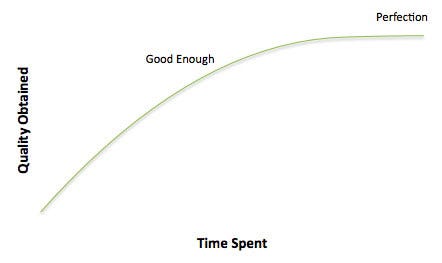
Don’t Let Perfect Be The Enemy of Good
This little gem will save you years but is often the most difficult to implement. We’ve all been there, spending countless hours on a project to get it 90% complete and then spend the same amount of time to move it the final 10%. In the grand scheme of things, did the last 10% really matter? Did anyone even notice? We have finite time in which to accomplish our important work. Don’t squander 4 hours of precious time on something that won’t affect the outcome. Don’t let perfect be the enemy of good. This is often the biggest challenge for the type-A, overachiever, perfectionists among us. I mean, don’t release work riddled with spelling errors and shoddy design — there is a certain bar you need to clear (that’s the 90%) — but don’t obsess and toil away on that last 10% if there will be no discernible impact. Tip: Deputize a trusted friend or colleague to grab you by the collar and say, “Tim! Wrap it up and move on.”
So, on that note…
Tim Cynova is a leader, HR consultant, and educator dedicated to co-creating anti-racist and anti-oppressive workplaces through using human-centered organizational design. He is a certified Senior Professional in HR, trained mediator, principal at Work. Shouldn’t. Suck., on faculty at New York’s The New School and Canada’s Banff Centre for Arts and Creativity, and for the past twelve years served as COO and then Co-CEO of the largest association of artists, creatives, and makers in the U.S.
Tim’s Top 20 Reads of 2015
By: Tim Cynova // Published: December 21, 2015
As you prepare to brave the roads, rails, and/or skies this holiday season, or just squirrel away under a pile of blankets, consider putting down the glowing screen and try some old school entertainment and enlightenment in the form of a book.
Here are a handful of memorable reads from my 2015 that have sparked interest in new ideas, rekindled affection for long-time hobbies, and provided superb content for cocktail party small talk. (No points docked for reading any of these on a glowing screen. Well, except for the scratch & sniff book.)

The Purpose Economy: How Your Desire for Impact, Personal Growth and Community Is Changing the World
Clan culture in the office environment can help companies accomplish a great deal, in addition to often providing employees with loads of coffee, a stocked beer fridge, and an enviable kinship with coworkers. Purpose culture is more elusive, and arguably more necessary if your organization has ambitions to change the world. If you want to level up your company culture in 2016, turn the pages of this tome written by Aaron Hurst, founder of the Taproot Foundation and CEO of Imperative.
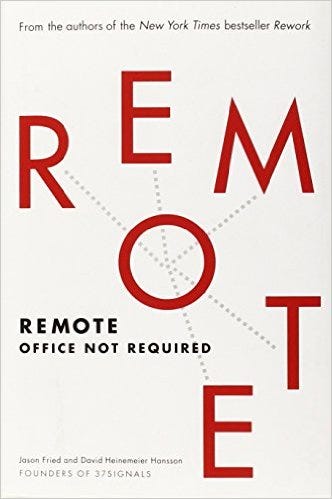
Remote: Office Not Required
The workplace of the 21st century is rapidly changing thanks in large part to technological advances, and an assist from recent research in organizational behavior. Nowadays most of us can do our work nearly anywhere there’s an Internet connection. These changes provoke questions and a large helping of anxiety and stress about what it means to manage staff when you can’t see them, or how to evaluate someone’s job performance when work falls outside of the normal 9-to-5. Written by the co-founders of 37signals, creator of the Basecamp project management software, Jason Fried and David Hannson set out to help us understand how our organizations can leverage this new-found flexibility, and offer tips to companies as well as remote workers for achieving success when miles, or coffee shops, apart.

The Essential Scratch & Sniff Guide to Becoming a Whiskey Know-It-All: Know Your Booze Before You Choose
When someone serves you a glass of bourbon do you worry they’ll ask you what you think and all you’ll be able to muster is, “Looks brownish and smells alcohol-y”? Then you might benefit from and enjoy this new scratch and sniff whiskey guide. The book allows you to read with your nose as you hone your olfactory system to go boldly into that next brown spirits encounter. Wine more your speed, you say? There’s a version of the book for aspiring oenophiles too.

Radical Evolution: The Promise and Peril of Enhancing Our Minds, Our Bodies — and What It Means to Be Human
Have you been hearing about exponential technologies, the Singularity, or Moore’s Law recently and thought, huh? Even though this book dates to 2006, author Joel Garreau offers a great primer to these topics and how they might change the world. At times you’ll be inspired by the promise of humanity and then just as quickly scared to death by the ease at which autonomous nanobots could destroy the Earth. No longer the stuff of science fiction, the future is now. Read up. (h/t to Adam Huttler for recommending this read.)

Understanding Comics: The Invisible Art
There once was a time when you’d say “comic” to me and I’d immediately picture a single-frame Far Side cartoon. These days, I am more enlightened about comic art thanks to this in-depth exploration of longer form comics and graphic novels. Hat tip to my coworker, and comic artist himself, Jason Tseng who tipped me off to this “innovative comic book [that] provides a detailed look at the history, meaning, and art of comics and cartooning.” After finishing the book you might just find yourself reaching for artist brushes, sketch pads, and author Scott McCloud’s follow-up book, Making Comics: Storytelling Secrets of Comics, Manga and Graphic Novels.
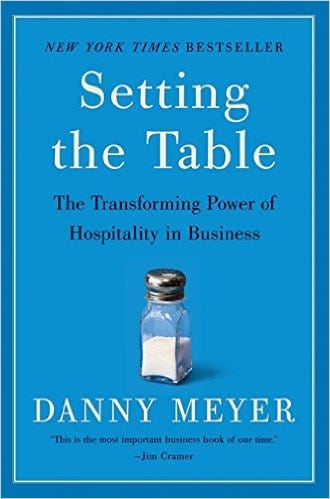
Setting the Table: The Transforming Power of Hospitality in Business
My friends in the restaurant industry tell me this is the playbook for how to deliver great service in the restaurant world. It’s written by Danny Meyer, the same guy behind the Shake Shack revolution that has so many of us standing in long lines for cheesy fries and custard shakes. If your business ever comes into contact with people, then Meyer’s read can help you hone that surprisingly rare competitive advantage — stellar service and a great experience for your patrons.
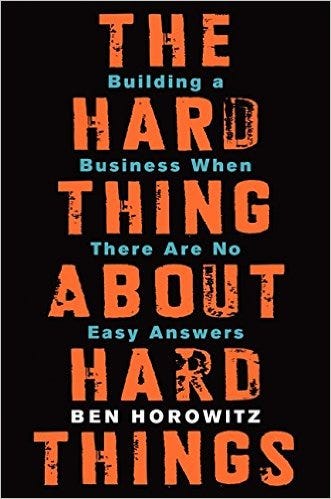
The Hard Thing About Hard Things: Building a Business When There Are No Easy Answers
Congratulations on the new company you just started or your recent promotion to manager! Here’s the book you need to read — STAT! — to fill in the gaps between theory and practice as the rubber meets the road in your professional life. Ben Horowitz’s advice often flies in the face of conventional wisdom to tell it like it is. Don’t reinvent the management wheel. The advice found in this quick read will save you alot of sleepless nights (or at least comfort you that you’re not the only one awake).
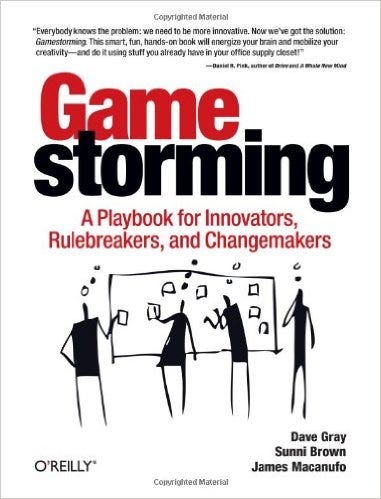
Gamestorming: A Playbook for Innovators, Rulebreakers, and Changemakers
Hey, let’s brainstorm! If you’re less than excited at the thought of standing with your coworkers writing things on the conference room whiteboard yet again, then check out Gamestorming. The authors provide 80 “games” to “help you break down barriers, communicate better, and generate new ideas, insights, and strategies.” The authors group the 80 games into Games for Opening, Games for Exploring, and Games for Closing to help you identify the best tools for the conversation you want to have. My personal favorite: The Pre-Mortem, or how is what we just committed to with so much excitement and promise going to end in a smoldering heap of crushed hopes and dreams? (My description, not the authors.)

Who
Are you new to interviewing job applicants? Want to be more certain that who you are about to hire has what it takes to fulfill the requirements of the position? Geoff Smart and Randy Street sketch out a step-by-step process that will help you go confidently from A to Z during the search process. They start by showing how you can create a scorecard to use so you don’t just pick someone who “feels right” and later find out you were wrong. They then walk you through how to source candidates, outline the four different interview types to help you learn more about candidates, and finally explain how to sell your prospective employee on the gig in order to seal the deal. Who will have you feeling more confident that the people you hire will be the people your organization needs to help it achieve its goals.

Scaling Up Excellence: Getting to More Without Settling for Less
How can companies quickly scale without losing what originally made them successful in the first place? Using a wealth of research and real-life case studies, authors and Stanford professors, Robert Sutton and Huggy Rao draw on rich material to “identify the key scaling challenges that confront every organization.” They go on to explain, among other things, how you can link “hot causes” to “cool solutions”, and discuss the trade-offs companies must make when using a “Buddhism” versus a “Catholicism” scaling approach. (That last one is their analogy referring to individualized approaches tailored to local needs or to replicate the same practices and customs as an organization or program expands.)
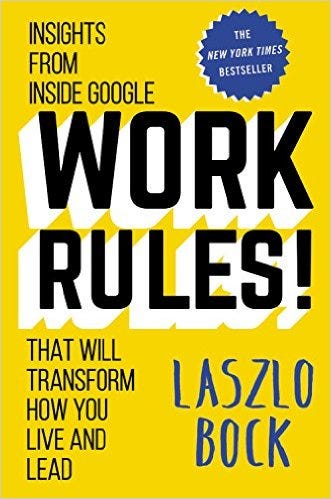
Work Rules!: Insights from Inside Google That Will Transform How You Live and Lead
What can 40,000 people, an innovative workplace, and a team of PhD statisticians offer companies around the world? Crack open this book by Google’s chief People person Laszlo Bock to find out. It’s so much more than just giving your people free food (although Mr. Bock explains what’s behind that famous perk). The book covers how to build a great company culture; rules for finding and hiring employees, for mass empowerment, for performance management, and rules for screwing up. A myriad of the experiments and research Google has undertaken fill the pages and bring the content to life.

Elon Musk: Tesla, SpaceX, and the Quest for a Fantastic Future
Elon Musk seems to be everywhere nowadays. Hyperloop? Musk. Sexy battery-powered cars? Musk. Colonize Mars / rescue a stranded Matt Damon? Musk. When I saw that there was a new biography written by Ashlee Vance — who was given exclusive access to Musk for this book — I quickly downloaded a copy to my Kindle (ok, full disclosure: the Kindle app on my iPad) and I devoured it. I came away with a pressing need to buy a Tesla and also with a fascination for how this guy, who’s by all account not very nice, can get his workers to work 100 hours a week by sketching out such a powerful singular purpose— to save humanity. See also in this list: The Purpose Economy. (Side note: since reading this biography I’ve been bugging my friends with this question, “Do you have to be an a$$hole leader of a company in order for it to change the world?”)

Fooling Houdini: Magicians, Mentalists, Math Geeks, and the Hidden Powers of the Mind
Uh, let’s just say I have a “friend” who even in his early 20s had a few magic tricks he’d show his friends. Nothing over the top, just a few card and coin tricks. Was he very good? Nope. So when I heard about this book by Alex Stone (a writer for The New York Times and Wall Street Journal) that begins at the Magic Olympics, I figured it was worth a closer look, you know, for this friend of mine. It’s a fascinating read that investigates “some of the lesser-known corners of psychology, neuroscience, physics, history, and even crime, all through the lens of trickery and illusion.” Mini-spoiler: In one study, Alex was able to remove a watch from a woman’s wrist — even while its alarm was going off — without her even noticing. It’s called brain blindness, and yes, it’s why you shouldn’t text and drive, or wear a watch around Alex Stone.

Moonwalking with Einstein: The Art and Science of Remembering Everything
Quick, what did you eat for breakfast yesterday? Don’t recall? I do, but that’s only because I eat the same thing every morning, a delicious bagel from Best Bagel on 35th Street. The second “experiential journalism” book on my list — if you already forgot, the previous book was about a journalist who did magic — is about the art and science of remembering everything. In a similar way to Alex Stone’s magic thesis, Joshua Foer dedicated a year of his life in order for him to remember what he ate for breakfast (my words, not his). Foer “draws on cutting-edge research, a surprising cultural history of remembering, and venerable tricks of the mentalist’s trade to transform our understanding of human memory.” Add this book to your Amazon queue before you forget.
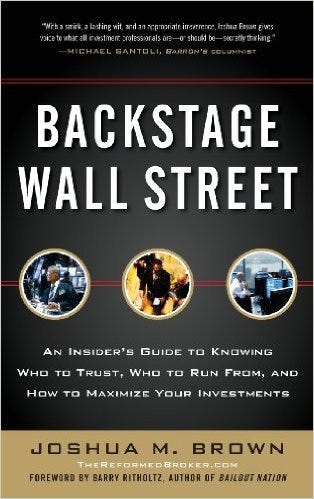
Backstage Wall Street: An Insider’s Guide to Knowing Who to Trust, Who to Run From, and How to Maximize Your Investments
Think this is another book about Wall Street? OK, yes, maybe I should have said think this is just another book about Wall Street. Joshua Brown, author of The Reformed Broker blog and CEO of Ritholtz Wealth Management, offers “clear and proven advice on how to navigate all the snares set by the lords of Wall Street.” Want to learn about how the person who set up your company’s 401(k) account years ago, and who you haven’t heard a peep from since, is still making money from you? Or how to minimize potentially hundreds of thousands of dollars over your lifetime paid to your 401(k) fund provider? And what the hell is an ETF? Crack open Josh’s book.
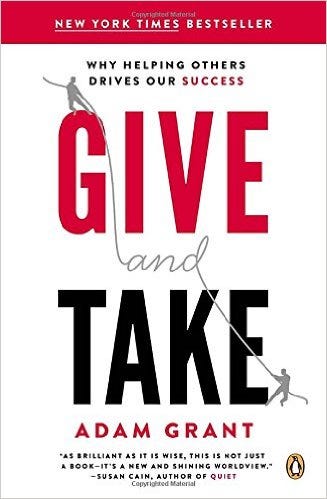
Give and Take: Why Helping Others Drives Our Success
I first learned about organizational psychologist Adam Grant’s work when chatting with my friend Amy Wrzesniewski, herself an organizational psychologist teaching and working out of Yale’s School of Management. Since that time, Adam is seemingly everywhere I look (granted I follow him on Twitter). In addition to his first book about how successful people connect with people, he’s co-authored a series of articles about women at work with Facebook COO Sheryl Sandberg for The New York Times, moderated this panel at Google about making work better, and authored another book about how non-conformists move the world. Fun fact: Adam was also a professional magician. So, if you ever have the pleasure of meeting him, you might want to keep an eye on your watch (See also: brain blindness and the above Fooling Houdini entry if that reference doesn’t make any sense).

Crucial Conversations: Tools for Talking When Stakes Are High
Difficult Conversations: How to Discuss What Matters Most
Fierce Conversations: Achieving Success at Work and in Life One Conversation at a Time
That’s right, you too can have challenging conversations in three exciting flavors — Crucial, Difficult, and Fierce! This past year, I set out to research various conversation frameworks that we could use at Fractured Atlas to provide all of us with the skills and shared vocabulary necessary to help alleviate the stress and lack of the “right words” when conversations turn from casual to crucial. As part of this process, I read the three books most frequently mentioned to help advance these skills— Crucial Conversations, Difficult Conversations, and Fierce Conversations (h/t Aaron Dworkin for putting Fierce on my radar.) Long story short (maybe there’s another blog post here), we ended up opting for the Crucial Conversations model. That said, I found helpful tips in all of the books. I also highly recommend this TED Talk by Susan Scott, author of Fierce Conversations.
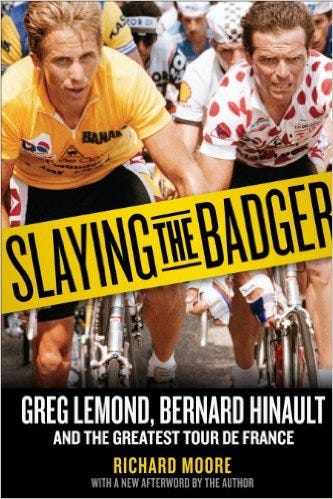
Slaying the Badger: Greg LeMond, Bernard Hinault, and the Greatest Tour de France
When I was as kid growing up in Indiana, I remember watching clips of the Tour de France on ABC’s Wide World of Sports. I can still remember my excitement in 1989 when Greg Lemond won the three-week-long race over Frenchman Laurent Fignon by 8 seconds (to this day still the smallest margin of victory ever in the race’s over 100-year history). Heartbreaking for Fignon and the French, glorious victory for LeMond and my young cycling Hoosier self raised on the cult cycling classic movie Breaking Away. Slaying the Badger focuses on a period a few years before the 1989 race as Lemond struggles to become the first American to win the Tour de France. If you like cycling, or are game for cautionary tales about what happens when two people on the same team are pitted against each other, where there’s betrayal on a grand scale, and it all plays out for a global audience, this book’s for you. (If you’re not, ESPN made a film about the story, and you can watch it on Netflix in under 90 minutes.)
Hope you enjoy these reads and here’s to a wonderful 2016 filled with many more!
Tim Cynova is a leader, HR consultant, and educator dedicated to co-creating anti-racist and anti-oppressive workplaces through using human-centered organizational design. He is a certified Senior Professional in HR, trained mediator, principal at Work. Shouldn’t. Suck., on faculty at New York’s The New School and Canada’s Banff Centre for Arts and Creativity, and for the past twelve years served as COO and then Co-CEO of the largest association of artists, creatives, and makers in the U.S.
Sans serif.
Photo by Niklas Bildhauer
By: Tim Cynova // Published: October 23, 2015
[Editor’s Note, 2021: This piece is in need of a serious update and some clarification with nearly seven years of hindsight. Stay tuned.]
Recently I estimated that with all of our hiring at Fractured Atlas more than 7,500 resumes have come across my desk since 2009. It’s certainly not Google or Facebook numbers by any stretch, but a significant number nonetheless.
Each time we post a position and receive 300+ applications in return, I make notes to myself about the things that hinder what might otherwise be outstanding candidates. It might be unfair, but these little things can consciously or unconsciously set you apart, or scuttle your shot. Don’t let these things — some of which are quite superficial — prevent you from landing your dream gig with a great organization.
Your application is being compared against other candidates who bring it, who write a bespoke cover letter, who polish their prose, who perfect their design. Don’t be left behind.
Just as great art poorly marketed can lose out to mediocre art splendidly marketed, so too can candidates who submit sub-par applications versus those who take the time to polish each aspect of theirs.
I’d like to share my notes here because I believe it benefits the entire cultural sector when organizations find the great people who can help them achieve amazing things.
So here they are, my tips for submitting a strong application:
Image by Sarah Semark
Sans serif. Dear God, please use a sans serif font for your materials. Using a serif font with all of its embellishments makes my eyes bleed after reading only a few sentences on the screen. Think about the person reviewing your application. They’re likely reading hundreds of competing applications. Make it easy for them to read the great stuff you wrote. Serif fonts do not make it easy. It’s like trudging through molasses. After only a few sentences I find myself skimming over the materials trying to glean the gist rather than taking in the substance of your argument.
Aesthetics and uniformity count. Use the same style and font throughout your application materials. You might be surprised by the number of applications that include a beautiful and cleanly designed resume attached to a cover letter that’s the equivalent of something scrawled on a cocktail napkin. Aesthetics count. Come on, we’re in the creative sector. By our very nature, we strive to make life more beautiful. Let that extend to your materials. Make your entire application packet match. Use the same fonts, colors, and overall design choices throughout, not just on the resume. Make it all something appealing to look at and read.
PDF It. At Fractured Atlas we ask for all of the application materials to be wrapped up in one PDF file and saved with the applicant’s name as the file name. Here’s what happens: We download all of the files to one folder and when the position search closes we go in and review them. If you don’t include it as a PDF, but say a Word file, your formatting goes out the window when opened on a machine other than yours, or one that doesn’t have the same fonts installed. Do yourself a favor and save your materials as a PDF so you’re certain that what we see is what you intended. Also, if you don’t save the filename with your name as the title but instead title it something like “Resume”, when it gets transferred to the folder with 300+ applications your application is literally lost in the shuffle. When we come to your name in the applicant tracker, your application is nowhere to be found. All of your hard work is in effect for naught.
Attention to detail. You can’t just say you possess great attention to detail while misspelling the company name, including a typo in the first sentence, and submitting materials in the wrong file format from what was requested. When the job calls for a stellar attention to detail, and your application materials include errors, how are we to believe that your actual work product won’t include similar errors as well? It’s like a Maslow’s Hierarchy of Needs. I imagine that you clearing the hurdle to get a job so that you have food and shelter ranks higher than a typical day in the office. If that’s true, your job application should be better crafted than most things you produce in the “wild.” We can’t have stellar attention to detail every time, but need to exhibit that we can at least have it for something we really care about as a baseline for demonstrating that we have those qualities to dedicate to our work.

Mad Libs cover letter. Look, we’ve all done it. It’s called boilerplate. We’re sending our application to a lot of organizations, are pressed for time, so rather than sit down and think, how can I express in writing to the company that I really get them, we write a letter that easily accommodates switching out the name of the company and some generic line about believing in their mission. We’re not fooling anyone. It’s easy to spot these letters. Mainly because most of the letter isn’t about the company, it’s about you. Take the time to craft a bespoke letter for each position you really want and skip the positions that don’t really interest you. Your effort here will yield better results in the long run. Related, don’t restate your resume in your cover letter. If you do this, you’re simply wasting valuable real estate that could be used to add more depth to you as an applicant.
Dot. Dash. Dot. The Morse Code cover letter. Here’s a trend I’ve been seeing recently. People submitting cover letters that consist of one micro paragraph followed by one loooooooonnngg paragraph, and closing with one micro paragraph. Long, large blocks of text lose your reader, particularly if they’re reading it on a screen. Make it easy and breezy to review your materials. Less is more. Open space on the page is attractive. Dense text blocks with 0.5" margins filled to the brim make people glaze over and skim. Every time I see one of these cover letters I’m reminded of a quote often attributed to Mark Twain, “I didn’t have time to write you a short letter, so I wrote you a long one.”
Distill, distill, distill until your cover letter is the equivalent of an incredibly delicious shot of fine espresso.
There’s no “I” in team, nor should there be at the start of each paragraph in your cover letter. Don’t start every sentence of your cover letter with “I” (or “My” for that matter). Starting each paragraph with “I” and/or “My” usually demonstrates that you lack a true understand of what we do at Fractured Atlas, who we serve, and how we serve them.
Business letter format. Use your application as a chance to show that you can correspond professionally. Do this by submitting your cover letter in proper business letter format. (Hint: The format includes the date, and the very first line on the page does not start “Tim,”)
Photo by Stéfan
These are not the droids you’re looking for. You might be surprised by how many people out of 300 start their cover letter by saying, “Great news, I’m who you’re looking for, you can stop your search!” Or that their ability to listen is better than anyone else’s. Or that their attention to detail is better than anyone else’s. Everyone is not in the top 99th percentile, and if you’re telling me that in a cover letter and not demonstrating it, you’re probably not in the 99th percentile. Demonstrate that you’re the person we’re looking for by writing a cover letter that conveys that you get Fractured Atlas and our members’ needs. Let us decide if you’re the person we’re looking for.
Plain English, please. Don’t be unnecessarily fancy in your language. Don’t say “utilized” when you can just as easily say “used”. This might be attractive at some companies, but at Fractured Atlas we spend a lot of our time trying to distill and explain complex and often confusing concepts as clearly as possible — tax law, the insurance industry — use plain, straight-forward, and easy-to-understand language.
Don’t include an objective on your resume. OK, I know there are a few different camps on this one, but I firmly land in the cynical your-objective-is-to-get-the-job-so-just-leave-it-off-of-your-materials-and-use-the-space-for-something-else camp. For many young people entering the workforce their objective should be to be exposed to as much as possible so they can refine where they want to go and what they want to be when they grow up.
A dash of arts. A professional resume for an administrative position should not include a lengthy list of your artistic activities. Again, this might vary by organization, but for us, we like to know that you have an artistic bent — for instance, every staff member at Fractured Atlas was an artist at some point in their life, and half of our staff are still practicing artists — but once that’s established we certainly don’t need to see your entire palmerès. Use that new-found space to include other things that are relevant to you excelling in the position and adding value to the organization.
Photo by Ryan McGuire
Time is not a proxy for expertise. When I read in application materials, “…for nearly one year,” or “3+ years…” or “over 20 years of experience,” the embedded assumption is that the longer you have spent doing something the better you are at doing it. Tell me how you demonstrated your expertise by what you delivered and how you achieved it. For all I know, if you say you’ve been doing something for 20+ years, that might just mean you’ve been doing something poorly for a very long time.
Bonus #1: Remove “References available upon request” if the references are requested. (See also “Attention to detail.”)
Bonus #2: Email isn’t broken. Here’s one I’ve used before when applying for jobs in an attempt to get a prospective employer to look at my materials. It’s the ol’ “Just want to make sure you received my email as I was having problems with Gmail / Outlook / my internet connection, etc.” We’re no longer submitting resumes by messenger pigeon. The email made it. It’s a less than sly way of following up with a prospective employer, especially one who says “No calls.” Let the process work. That said, if you have a friend or colleague in common with someone in the organization, now is the time to see if that person can put in a good word for you right after you’ve emailed your materials. Otherwise, sit tight. I can promise you that the employer hasn’t forgotten that they need to fill the position.
Searching for and securing a job is a full-time job. I’ve been there and know how exhausting and sometimes dispiriting the process can be, especially when you really want to work for an organization (I’m looking at you New-York Historical Society circa 2007). Keep the faith and keep your chin up. (If I had gotten the gig at NYHS, I wouldn’t now have the best job ever at an incredible organization with kick-ass coworkers doing amazing work.) Things have a way of working out in unexpected and awesome ways.
The tips above can help grease the skids so you see rewards for your hard work. Obviously the application is just one part of the process to get a job. It’s just to get you in the door for an interview so you can bring your application to life.
Don’t be dismayed if you don’t get an interview. Over the years we’ve interviewed people who haven’t been right for a position one time around and who get the exact position in a future search. Only some of it is you. The other part is the current team composition, the organization’s current programs and growth plans, and which candidate is going to build on both the team and organization at that point in time.
Good luck and Godspeed in your search, and please, dear God, use a sans serif font.
Tim Cynova is a leader, HR consultant, and educator dedicated to co-creating anti-racist and anti-oppressive workplaces through using human-centered organizational design. He is a certified Senior Professional in HR, trained mediator, principal at Work. Shouldn’t. Suck., on faculty at New York’s The New School and Canada’s Banff Centre for Arts and Creativity, and for the past twelve years served as COO and then Co-CEO of the largest association of artists, creatives, and makers in the U.S.
What Would Zappos Do?
By: Tim Cynova // Published: October 22, 2015
This past holiday season I found myself increasingly asking the question — WWZD? What Would Zappos Do?
Why is the venue usher being so unreasonable to that couple and ruining the concert for everyone? WWZD?
Why does it seem like that ticket agent is auditioning for the role of The Grinch? WWZD?
Why is that person yelling at customers to separate into multiple lines when there is no signage indicating that that’s what the store prefers? WWZD?
For years I have been somewhat of a Zappophile, if you will, studying the ways of this company that has come to represent the gold standard in customer service. Staying on the phone with a customer for eight hours to resolve her issues, and that’s not frowned upon? Zappos. Creating a workplace that’s fun and a little weird? Zappos. Delivering WOW while buying shoes? Zappos.
While I can only hypothesize WWZD in the above situations that I’ve experienced in recent weeks, earlier this Fall I had the great fortune to visit Zappos’s headquarters in Las Vegas to see firsthand WDZD — What Does Zappos Do. (Thank you to my gracious hosts: the Zappos Insights team and Zappos Coach Augusta Scott.)
Below are some of the most memorable moments from my visit to Zappos:
(1) Zapponians talk constantly about their ten core values.
I mean, constantly. And it’s not in the contrived way we see on The Office or in Office Space. This is in an everyone has them tattooed on their soul type of way.
Everyone is referencing and reinforcing the company’s values all. the. time. I’m not exaggerating when I say that. About half of what came out of people’s mouths during my stay was related to their core values in one way or another. It’s not in a generic, corporate way of “Remember Our Core Values” signs and banners, it’s more in a “Oh yeah, we did that because of core value number 3.” Everything is about how a decision was based on core value #1, or how someone is working on improving their performance on core value #5, or how you can use your voice to convey core value #8 while on the phone.
During their quarterly all hands meeting of the 1,600 staff they screened a scene from Divergent that their video team edited to make it about Zappos’s core values. That same meeting ended with a Zappos rock band and choir performing an original song about their core values as the audience of employees rocked out.
Imagine how your organization would be different if your core values were so ingrained in your people as to be second nature. Would decisions be made differently? Would your staffing decisions change? Would your programs and services reflect this?
(2) Everyone has exactly the same size desk.
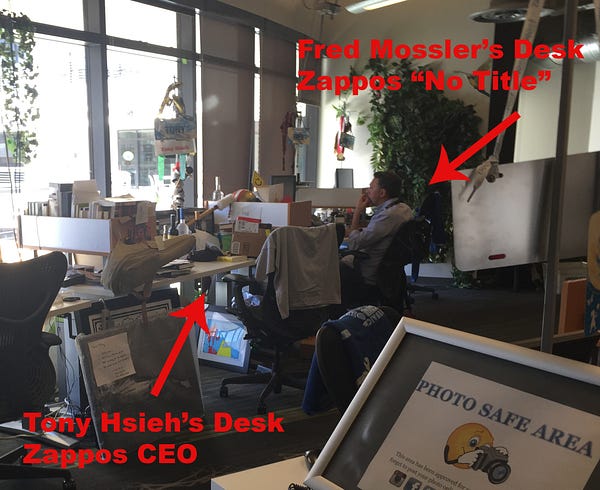
This one made a particular impression on me since we’re undergoing a renovation to make room for more desks in the Fractured Atlas office. In the Zappos office, every person has exactly the same size workstation in an open bullpen format — from CEO Tony Hsieh to the customer loyalty team member who started working yesterday. Same workstation. Need a little privacy? Move to one of the lounge spaces or check out one of the many small conference rooms around the building.
Tony explains in this article on Inc.com why Zappos designed its space to maximize serendipity and meaningful collisions.
Research shows that by breaking down the walls and putting your team in close proximity you set the table for greater collaboration and innovation. Maybe the new model we’ve been looking for in the arts is solved with desk size and working proximity?
(3) Holiday Helpers.
All Zappos employees go through the same four-week training program before transitioning into the job they were hired to perform. Call Zappos with a question and you might just speak with their new head of finance, or general counsel, as they complete the required customer service training too.
Think about it. You went through an exhaustive search to identify and hire your new Director of Development. You anxiously await her arrival and then you need to wait another month before she finishes her “core curriculum” training. That’s the cost of doing business when you want everyone in your organization to be able to deliver the same high level of customer service regardless of their position. (They also famously offer new hires $2,000 to leave after the second week to weed out those who aren’t a good fit for the organization.)
This early training is not simply a rite of passage, it’s laying the groundwork for their Holiday Helpers initiative. Not surprisingly, the holiday season is Zappos’s busiest time of the year. In addition to hiring temporary staff to help with the extra work, every staff member from CEO Tony Hsieh on down are required to spend 10 hours on the phones between Thanksgiving and New Year’s chipping in on the customer service front.
How would arts organizations operate differently if the Executive Director made a habit of working in the box office, showing guests to their seats for a performance, or serving coffee at the concession stand during half-time intermission?
(4) Quarterly all hands meetings are primarily about the “soft stuff.”
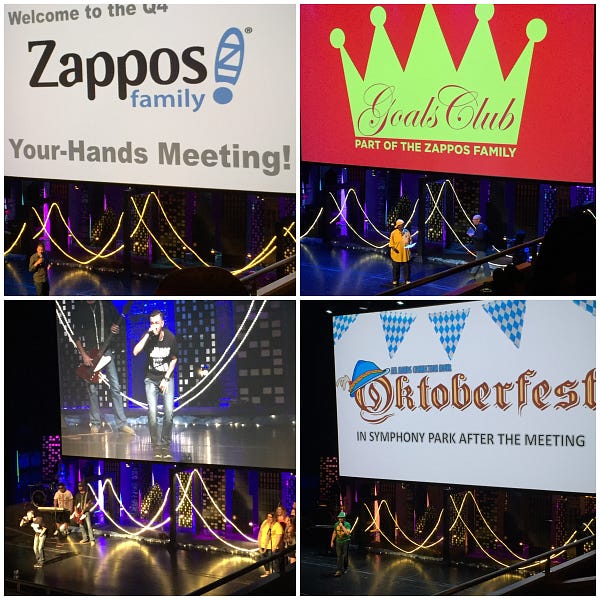
One of the highlights of my time at Zappos was being able to attend their quarterly all hands meeting. They held the meeting at The Smith Center (home of the Las Vegas Symphony), turned on their voicemail — seriously, if you tried calling Zappos during this meeting you would have heard a voicemail greeting saying no one was home — and all attended the 3+ hour meeting followed by an Oktoberfest happy hour (Zappos core value #3: Create Fun and A Little Weirdness).
These all hands meetings spend a huge amount of time on the “soft” stuff. Sure there was some talk about this policy change or that press announcement, but the better part of that meeting was spent talking about, and recognizing Zapponians for, their accomplishments. This included people who worked with coach Augusta Scott to complete the 30-day goals program, to their Movember Team, extreme athletes, and the Zappos choir.
During the all hands meeting, I wondered what would happen if a symphony orchestra secretly replaced their concert ushers with Zappos customer loyalty team members. Now, I’ve never attended a performance at The Smith Center, so for all I know the ushers are already on par with Zappos CLT members. However, I’m speaking in more generic terms about what if any hall secretly replaced its ushers for a performance (especially the place I visited recently where the ushers were not interested in delivering WOW through service (Zappos core value #1)). Would this noticeably change the arts-going experience? Make it more fun and entertaining?
(5) Geo-tagging and personal connections.
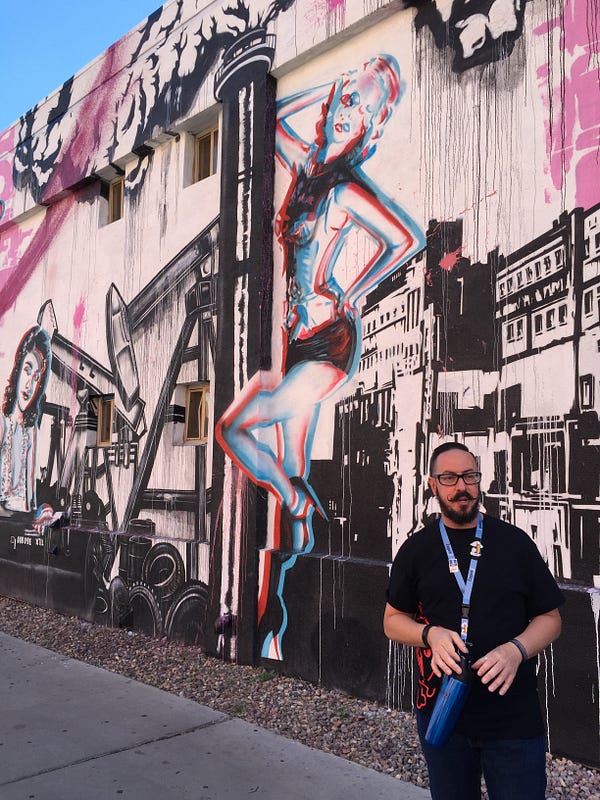
On our tour of the customer loyalty group bullpen, I learned how Zappos’s phone system routes customer calls to CLT members who have a higher probability that at some point they lived near the caller. This helps create the personal connections CLT members look to establish during their interaction. Our tour guide recalled fielding a call from a women who lived a block away from his childhood home. Think of the personal bond that that customer now feels with Zappos because of the personal interaction and vice versa.
How would the arts-going experience be different if instead of policing the audience, house staff tried to make two personal connections with audience members. “I love your scarf!” “You’re rocking a great pair of shoes!” “I’m so happy you’re joining us today, this performance is mind-blowing!” (It sure beats, here’s your program, there’s seat G15.)
(6) Lots of talk about holacracy.

It’s huge, it’s messy, it’s confusing, it’s stressful, but it’s worth watching this experiment to see how it plays out when a successful, fast-growing company essentially throws all of the pieces up in the air and attempts to have them fall in a configuration free of traditional hierarchy and titles. This experiment is partly aimed at re-injecting the feeling they had in the early days of limitless innovation and entrepreneurship into what has grown to become a 1,600-person company.
While on the surface people put on a brave face, if you scratch just a bit I got the sense that there’s a great deal of anxiety associated with this change. I also got the sense that some people thought Zappos was undertaking this due to restless entrepreneurs at the helm. Either way, they’re doing it and we should watch closely to see what happens. (Zappos core value #2: Embrace and Drive Change; and #4: Be Adventurous, Creative, and Open-Minded)
Is your organization designed to be entrepreneurial and support a culture of innovation? Do you have a way for people to make small bets, some of which evolve into new programs and services?
(7) I never heard Zapponians say anything about Zappos selling shoes.
This was a bit of a shock to me, and I only realized it while riding the shuttle back to the airport. If I hadn’t known what Zappos did, I likely would have thought this company was a design firm or software company.
My sense is that they could choose to do any one of 1,000 things, and with their strong culture and commitment to stellar service they would still be successful.
What’s the cultural sector’s equivalent of not talking about shoes? Should we stop talking about art? What would we talk about instead? How might an arts organization reframe its collective purpose in such a way that the art itself is just a semi-arbitrary means to an end?
(8) Coach your people to success.
Recently, I saw this cartoon with two managers discussing investing in employee development. In it, the first manager says, “What if we train them and they leave us?” To which the second replied, “What if we don’t … and they stay?”
Zappos cares about developing its people. They show this in many ways, one of which is employing a full-time personal coach. Coach Augusta Scott works with a handful of Zapponians each month as they make progress towards achieving a variety of goals. Some people come to her wanting to buy a house, or passing the CPA exam, or losing weight (Augusta prefers to say you’re releasingweight because you often find those things you lose).
It’s not possible for most of our organizations to employ a personal coach. We can however do things that move things forward on this front. Maybe organize a monthly wellness challenge? (Post a tote board in the office this February to count the number of times people walk up the stairs.) Maybe a monthly book club of people trying to accomplish a specific goal? (I recommend reading Get Off Your But by Sean Stephenson, The Happiness Project by Gretchen Rubin, or the newly published Game Plan by my friend Ciara Pressler to kick off 2015 and support your New Year’s resolutions.)
(9) Zappos really is a special place.

Every single person I met during my time at Zappos was kind and friendly and helpful, and was positive about their coworkers and the organization. (Zappos core value #7: Build a Positive Team and Family Spirit.)
I can hear readers saying, this is all well and good, but it’s Zappos. They have tons of money to do things like this. How am I supposed to do any of this with a nonprofit budget? I hear you, but read Tony Hseih’s Delivering Happiness to learn about how Zappos nearly went out of business several times before they became the Zappos we know today. A culture of innovation and excellence with strong core values doesn’t emerge fully formed overnight.
Zappos found the secret, and I think the WWZD frame is a helpful one to apply when thinking about better ways of accomplishing something that doesn’t quite seem to work — What Would Zappos Do?
Tim Cynova is a leader, HR consultant, and educator dedicated to co-creating anti-racist and anti-oppressive workplaces through using human-centered organizational design. He is a certified Senior Professional in HR, trained mediator, principal at Work. Shouldn’t. Suck., on faculty at New York’s The New School and Canada’s Banff Centre for Arts and Creativity, and for the past twelve years served as COO and then Co-CEO of the largest association of artists, creatives, and makers in the U.S.





































